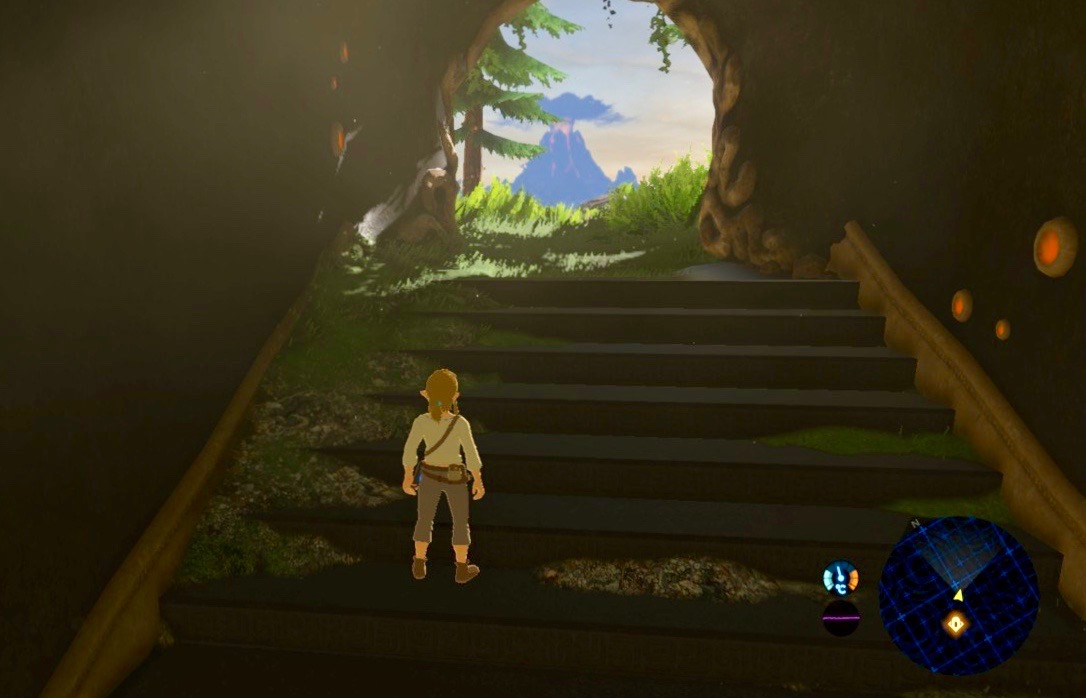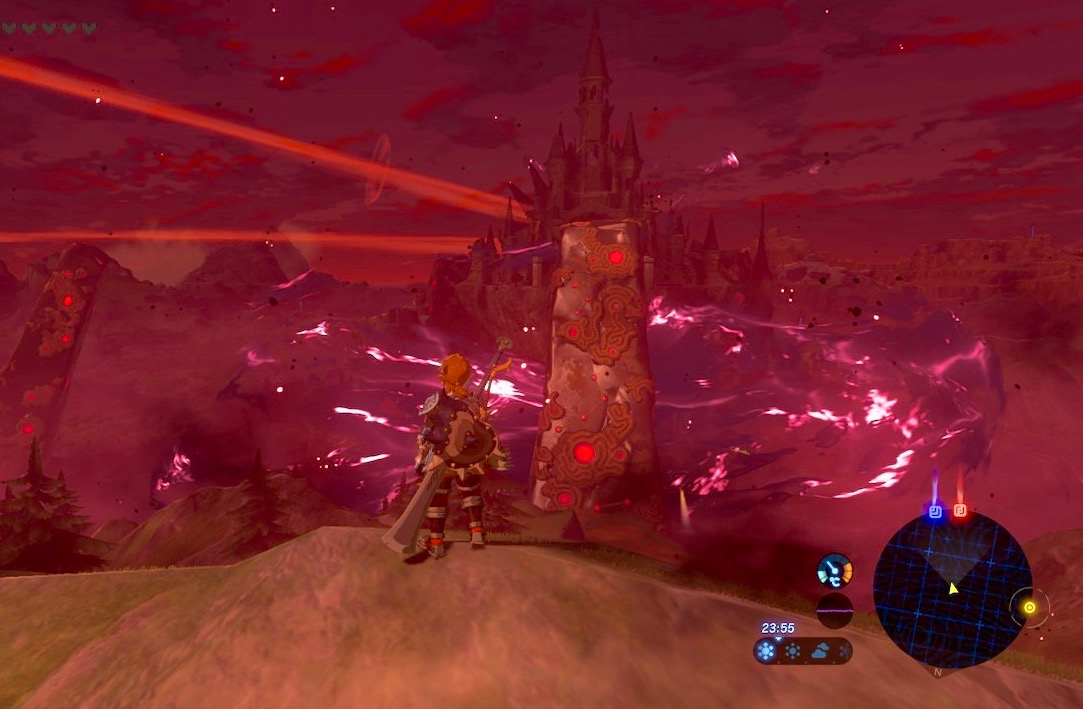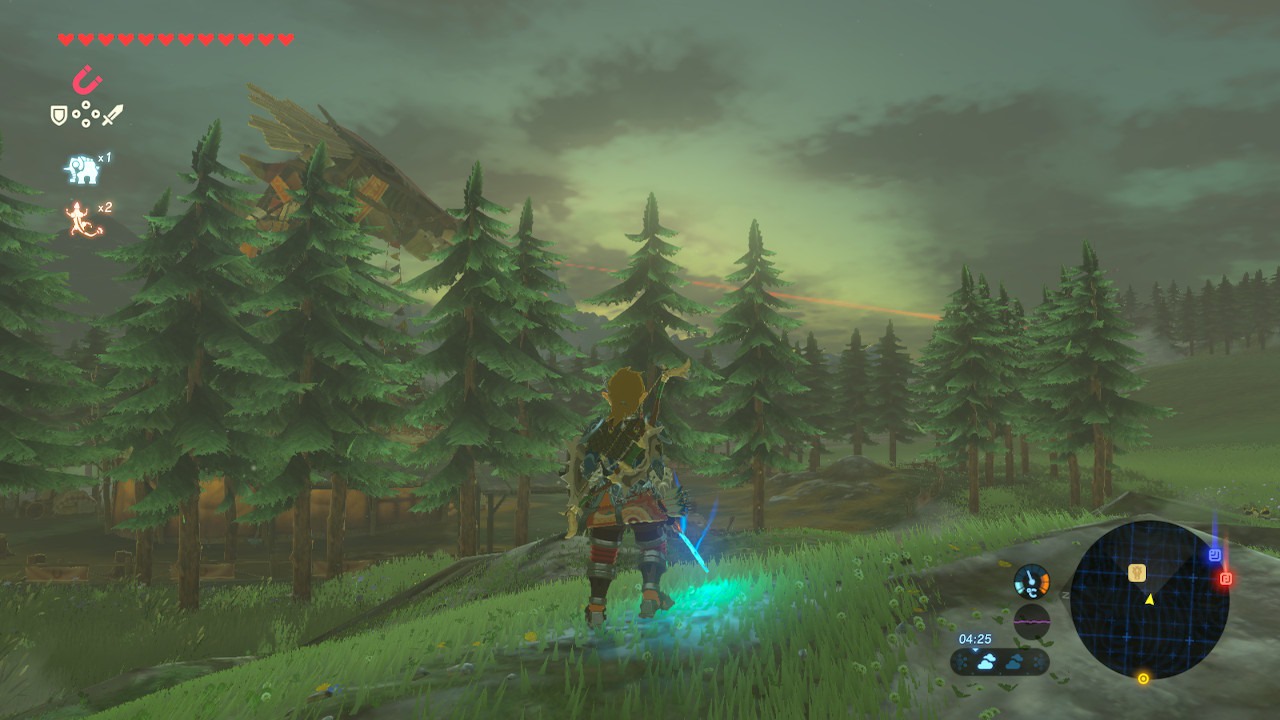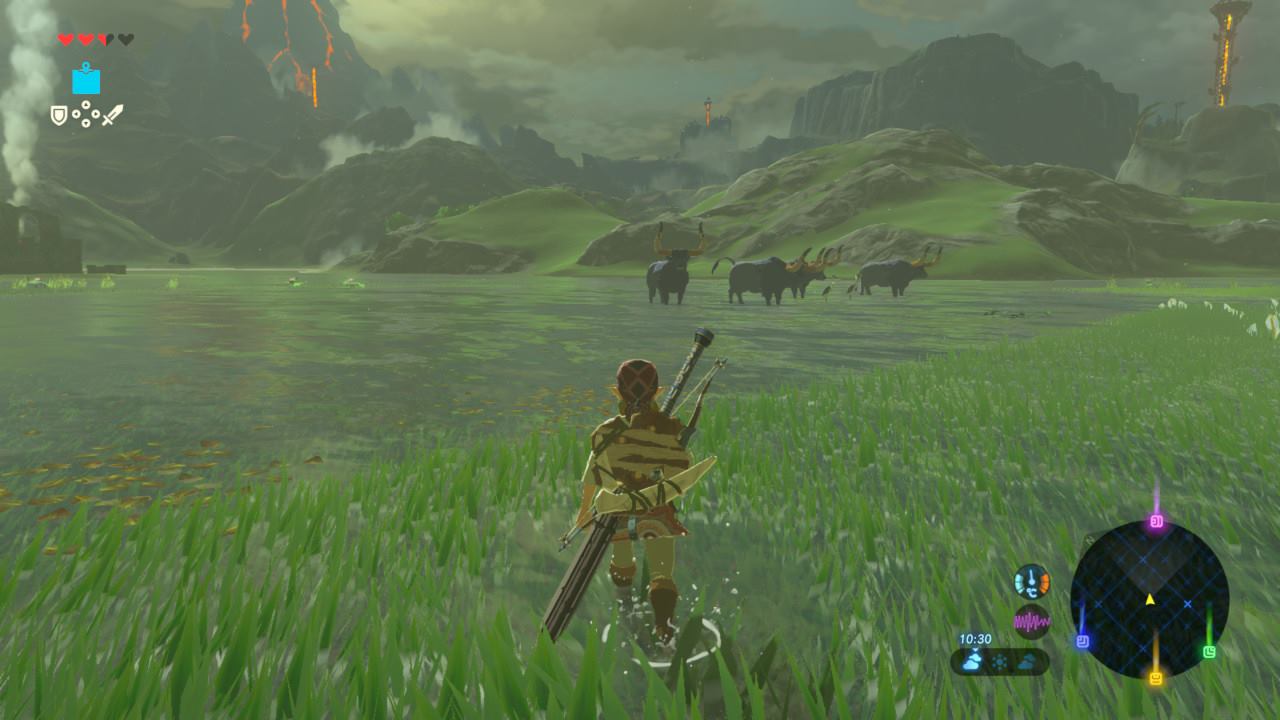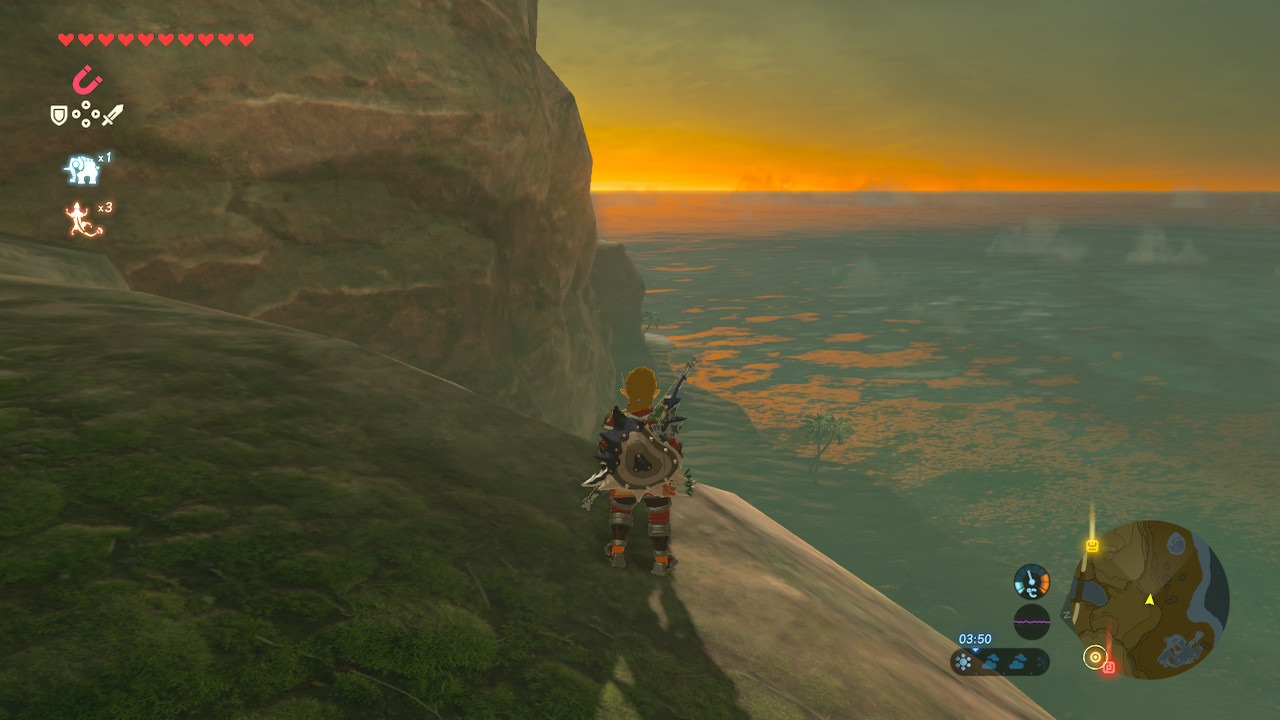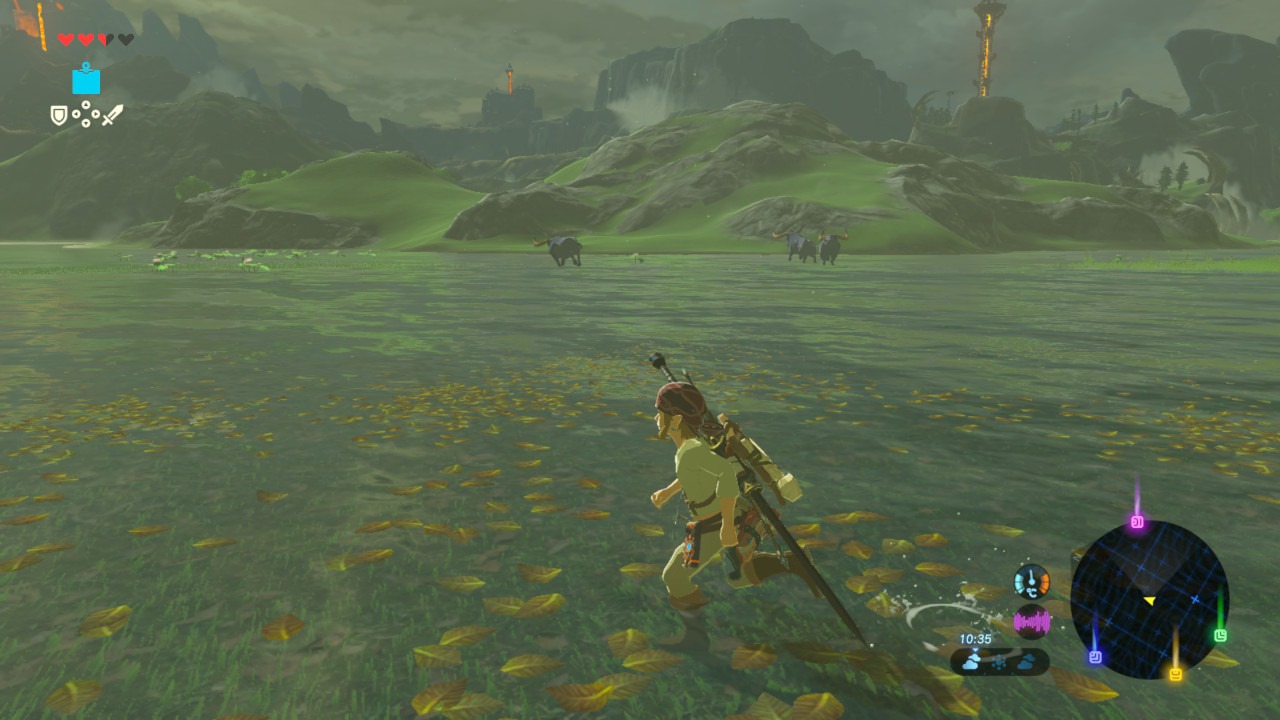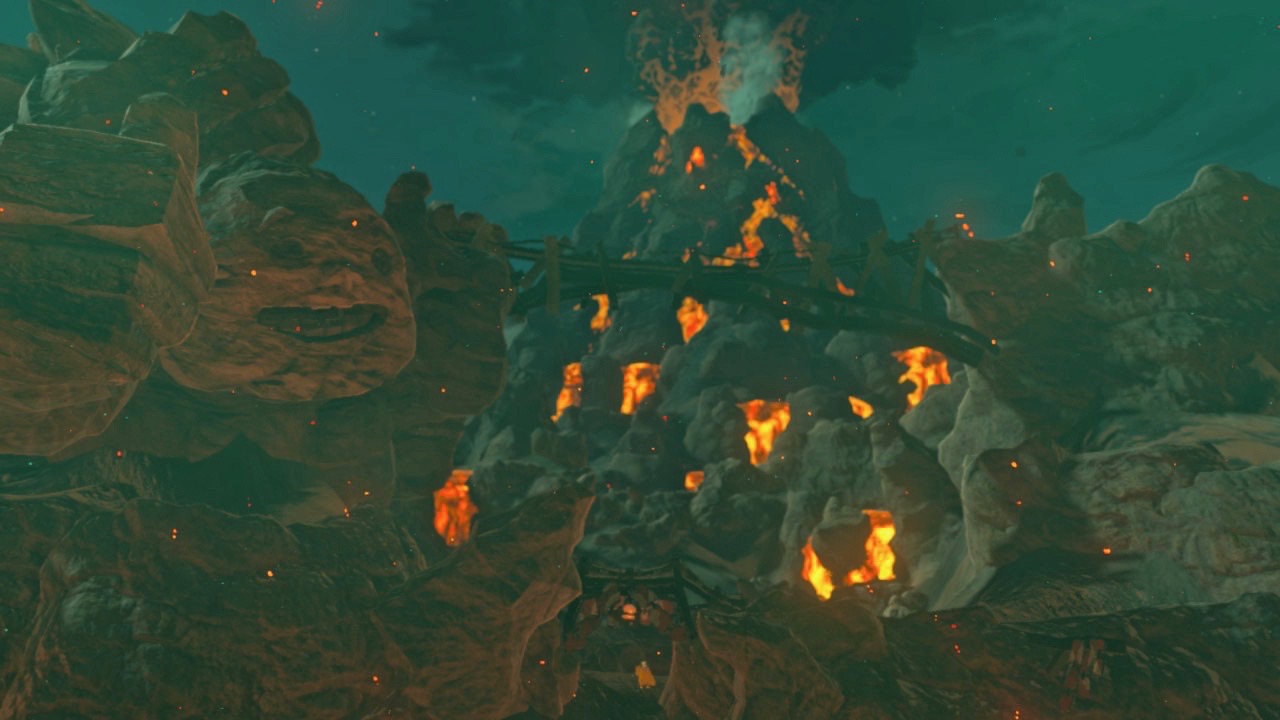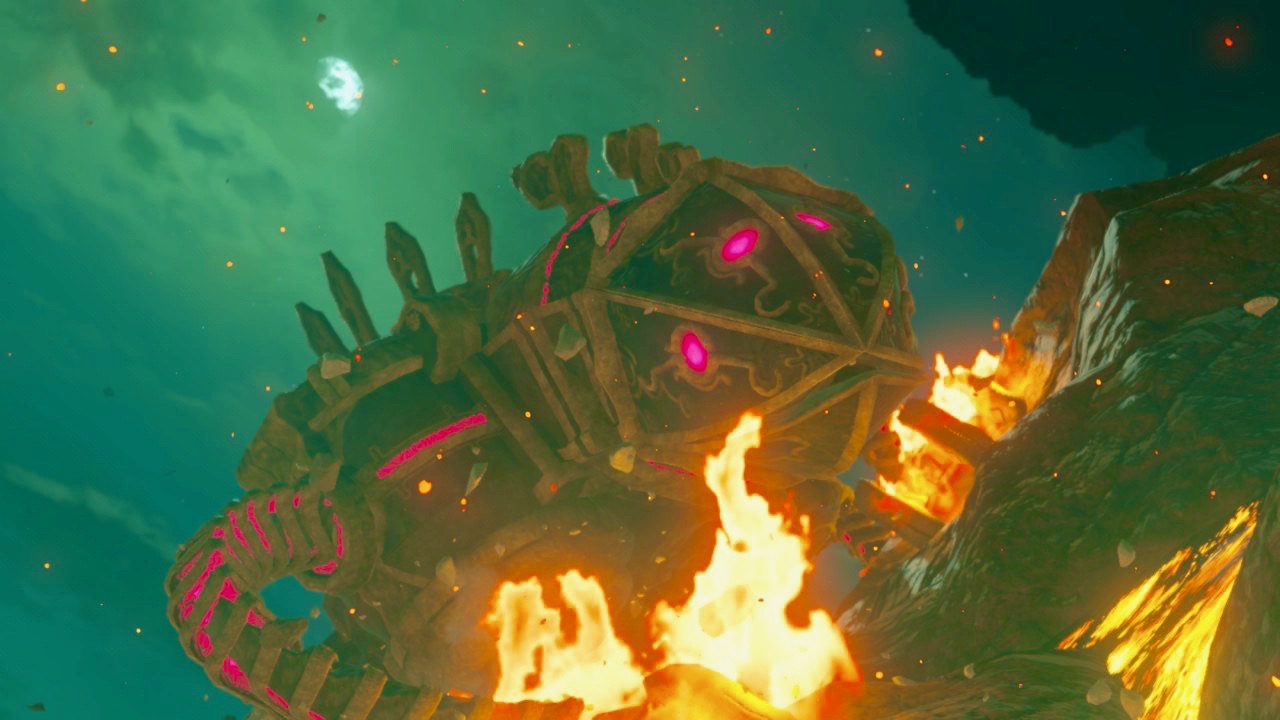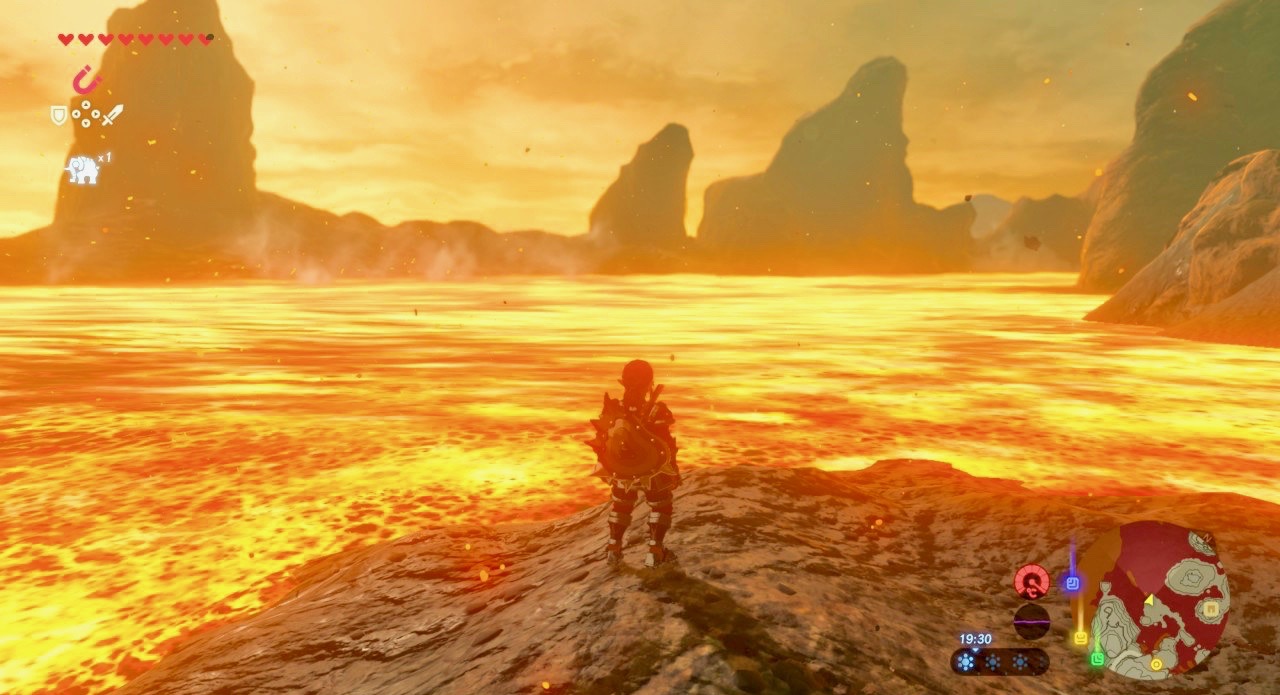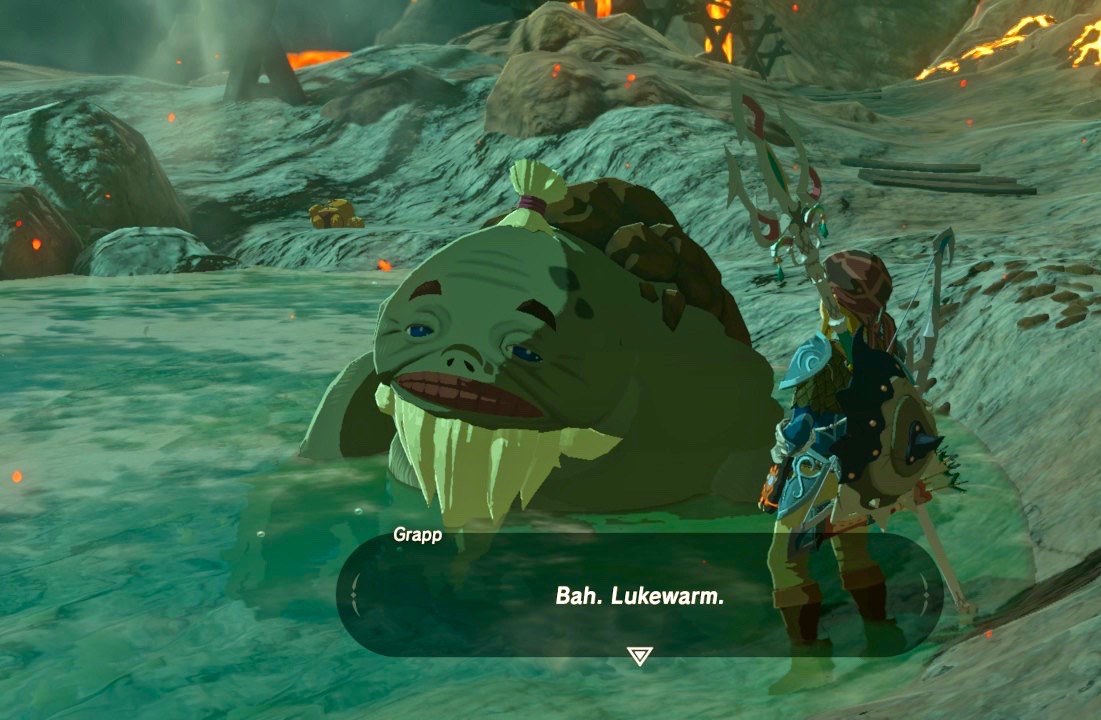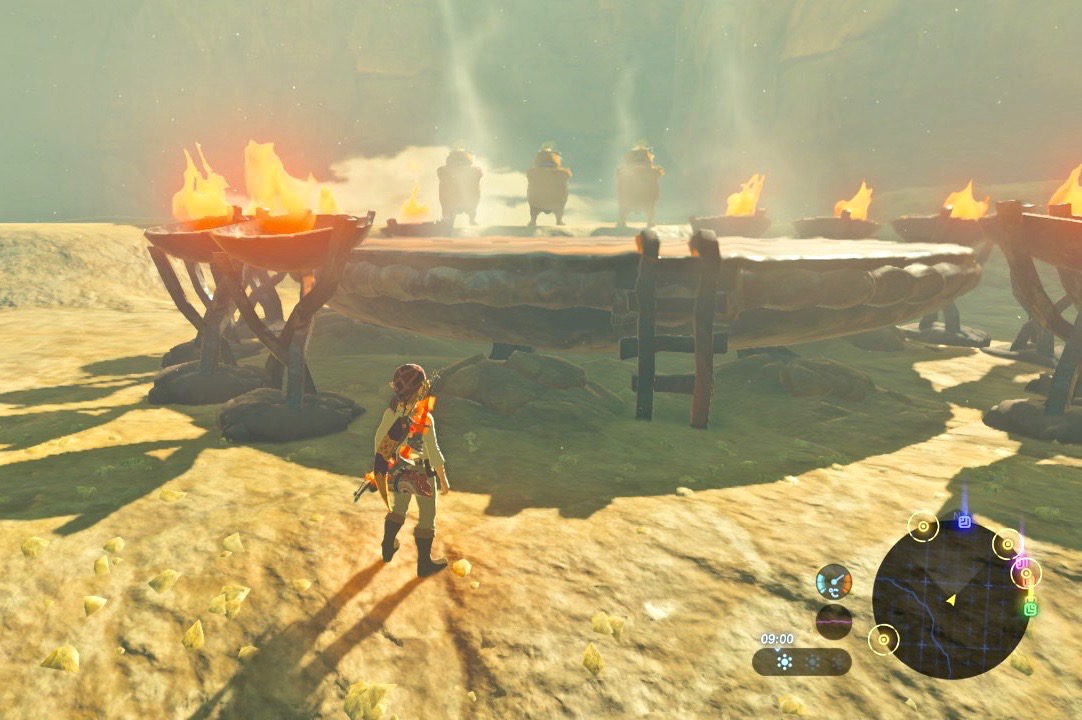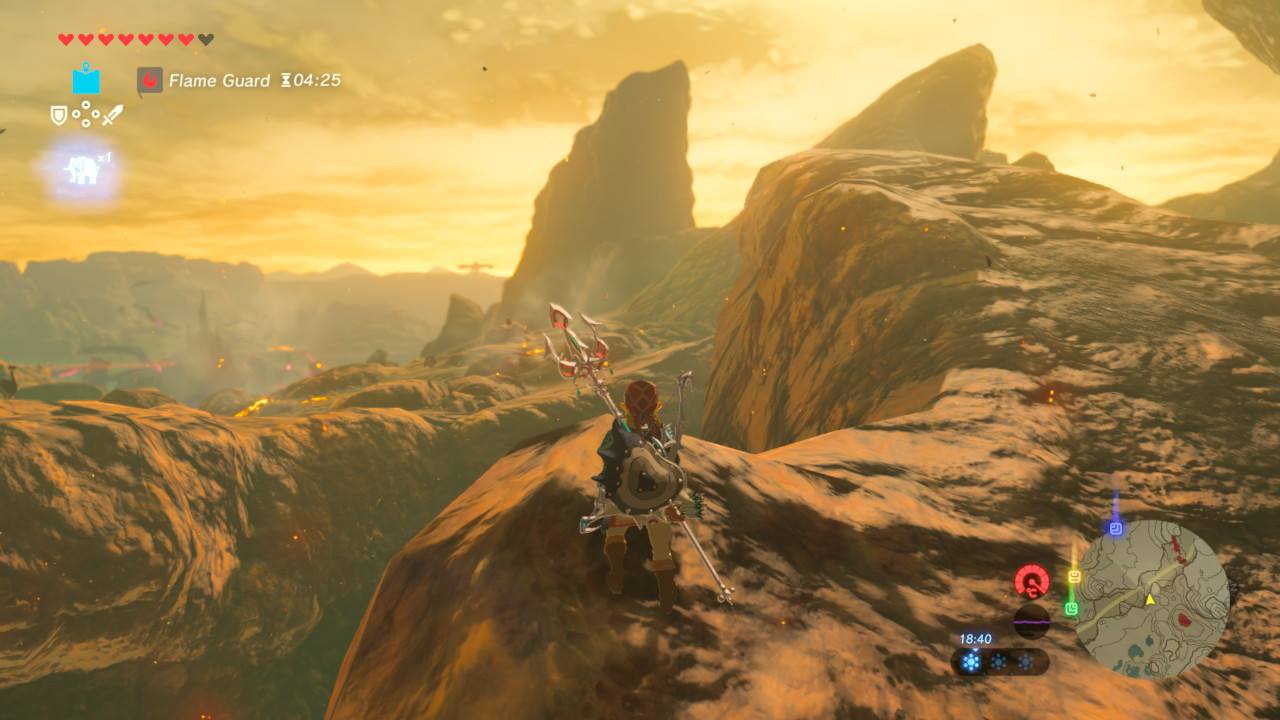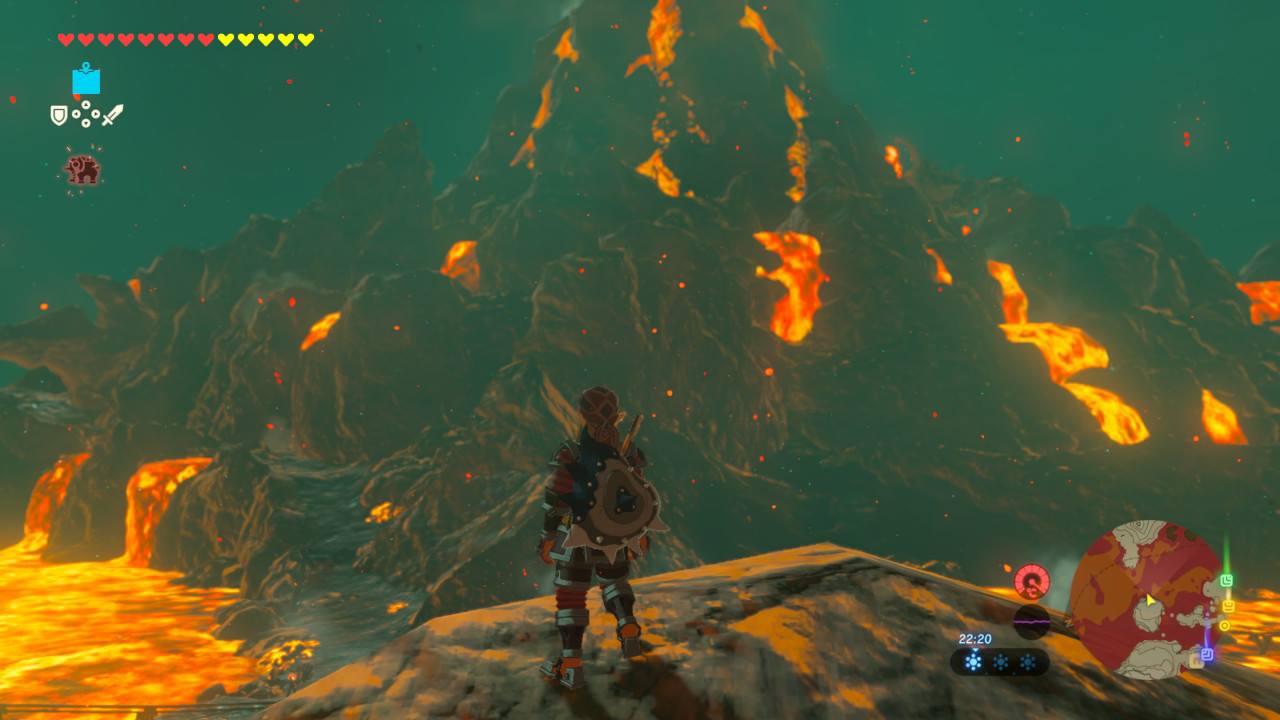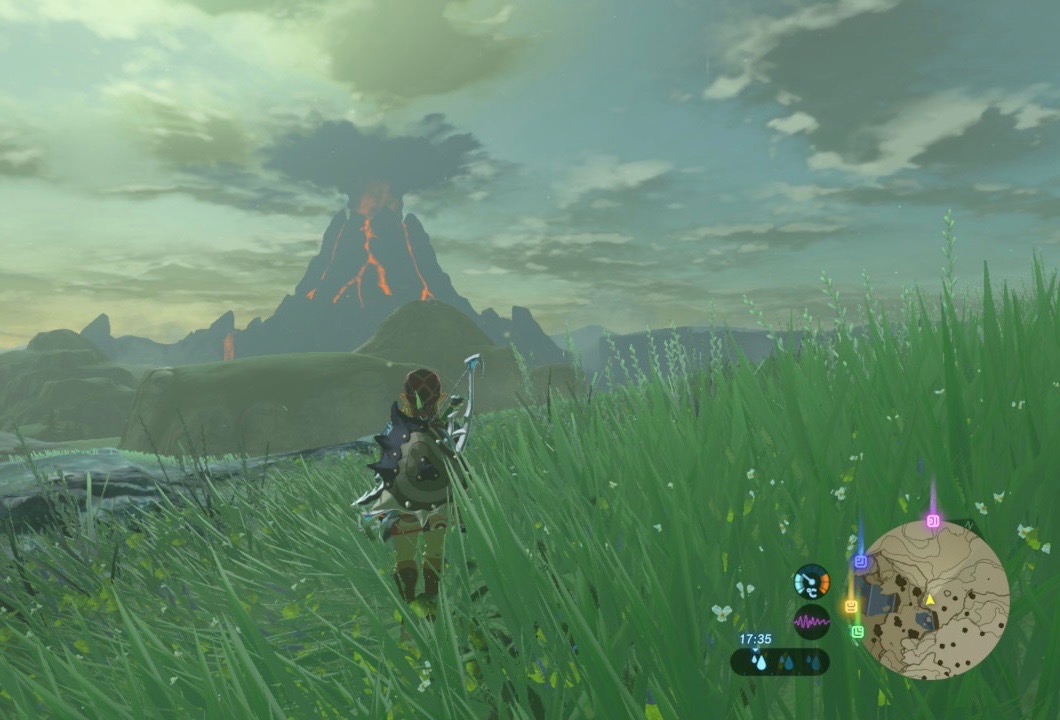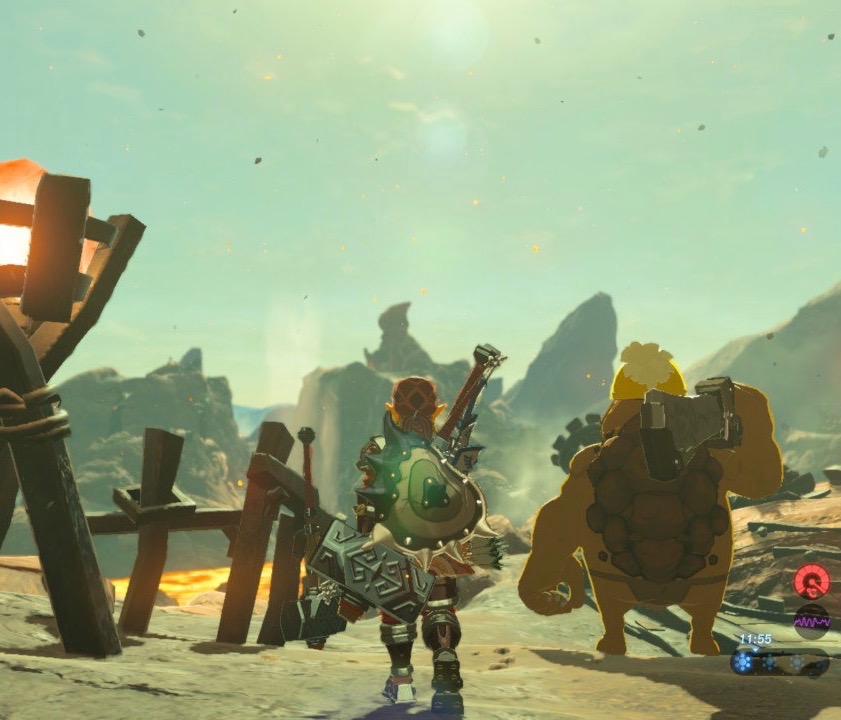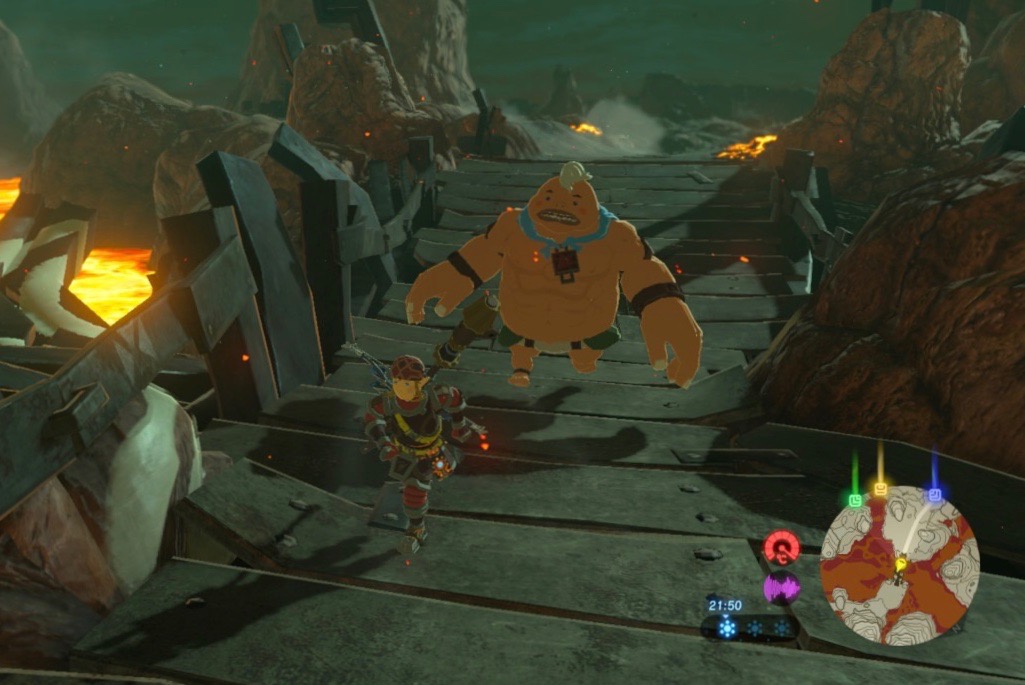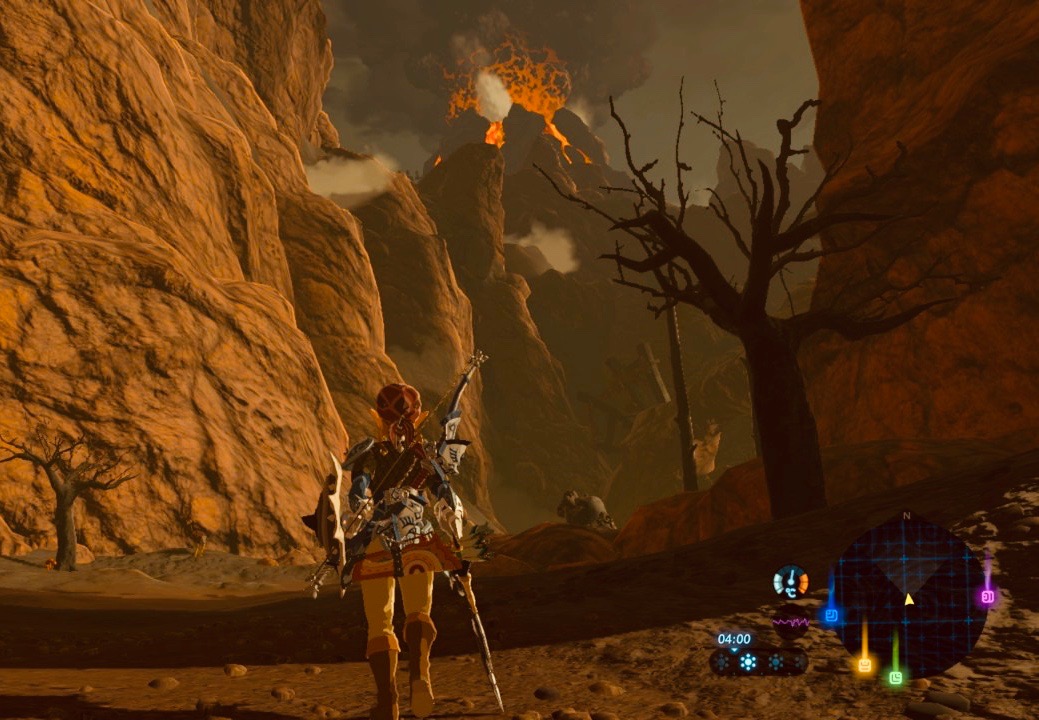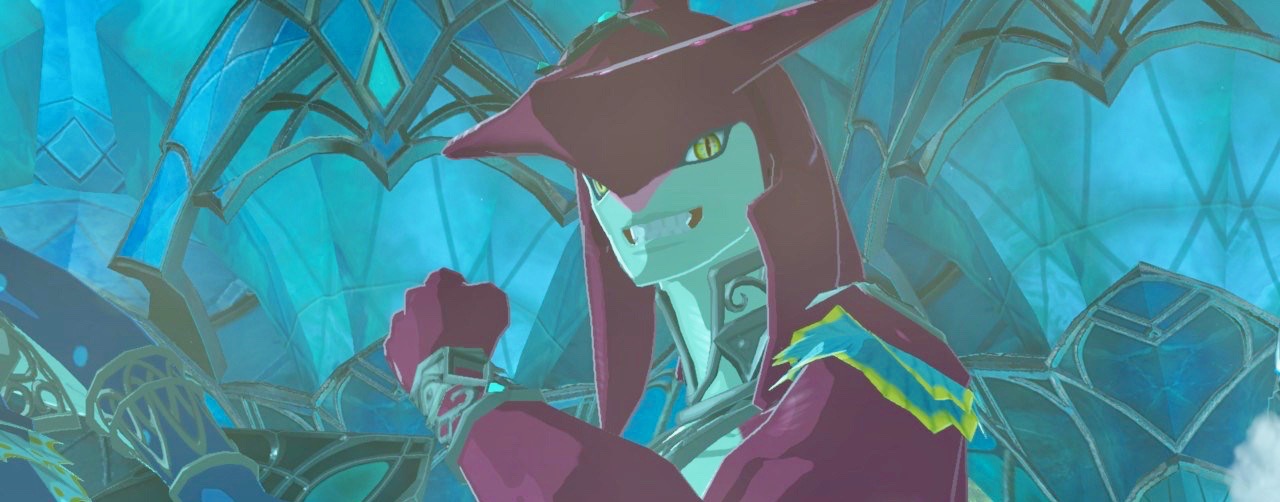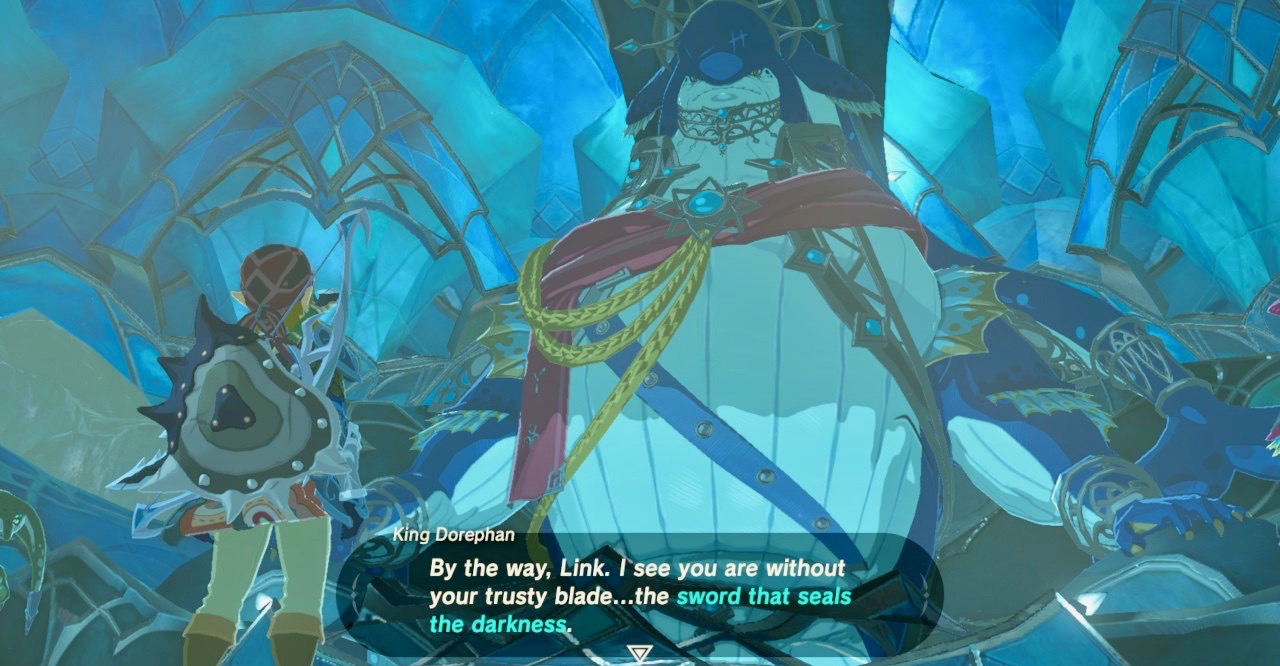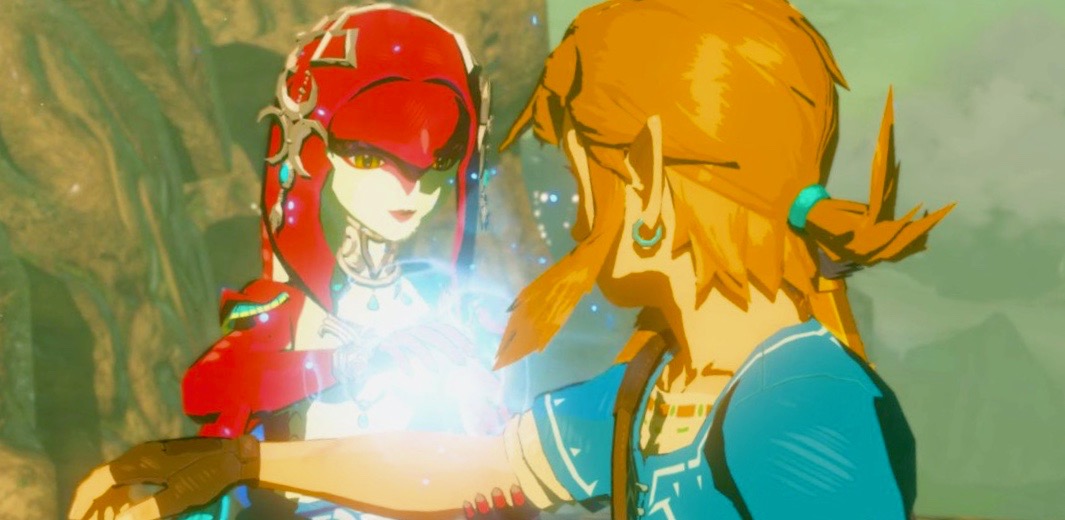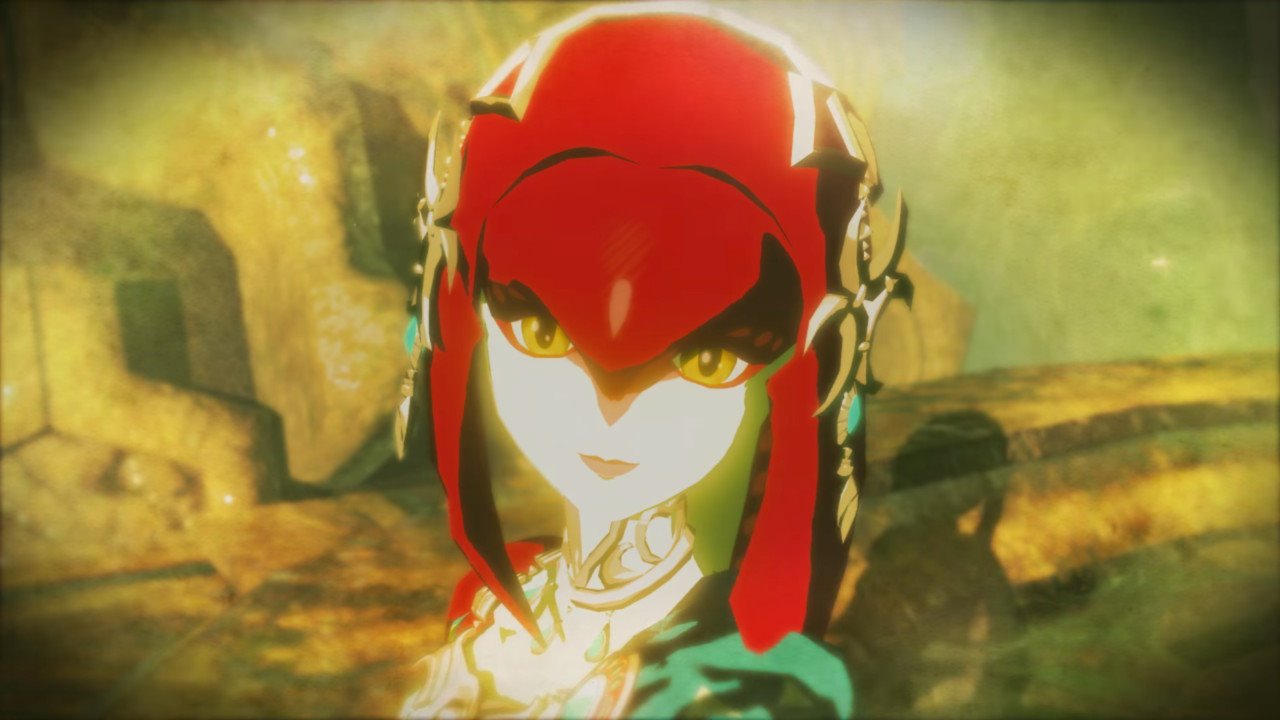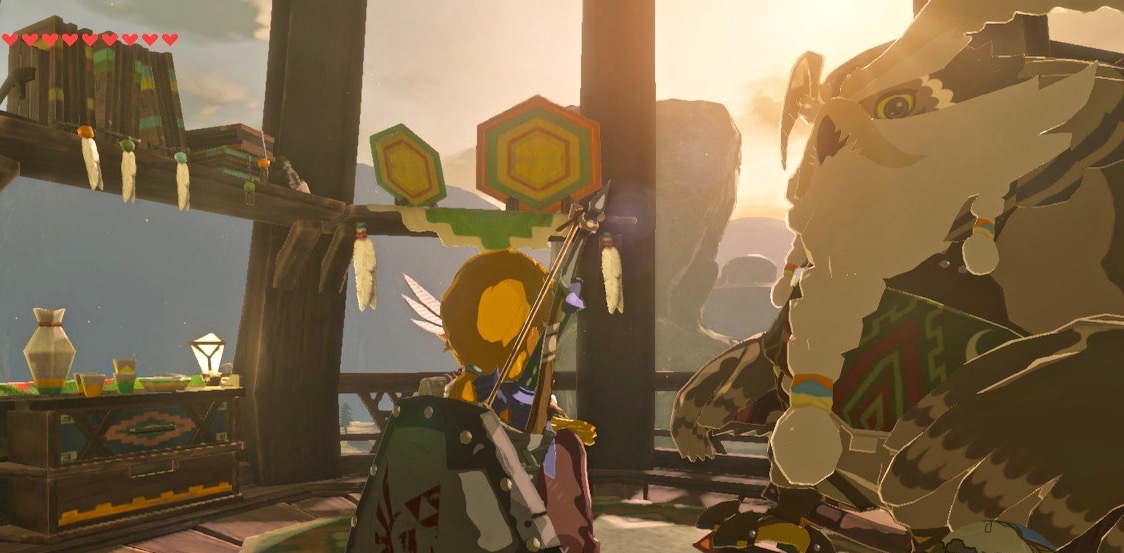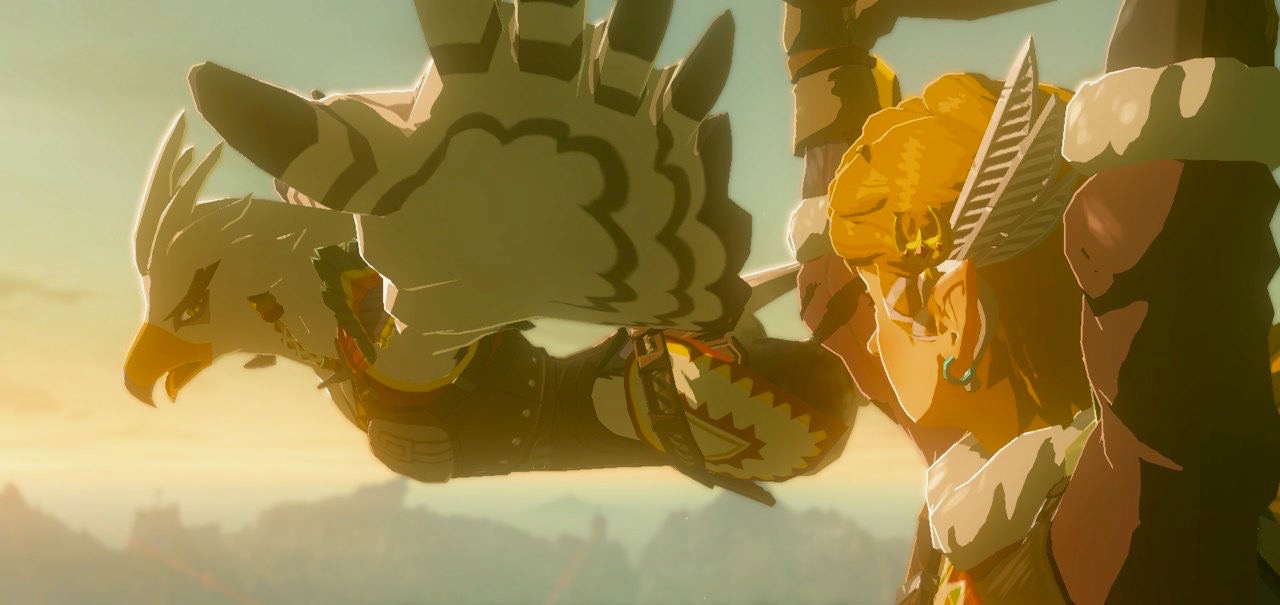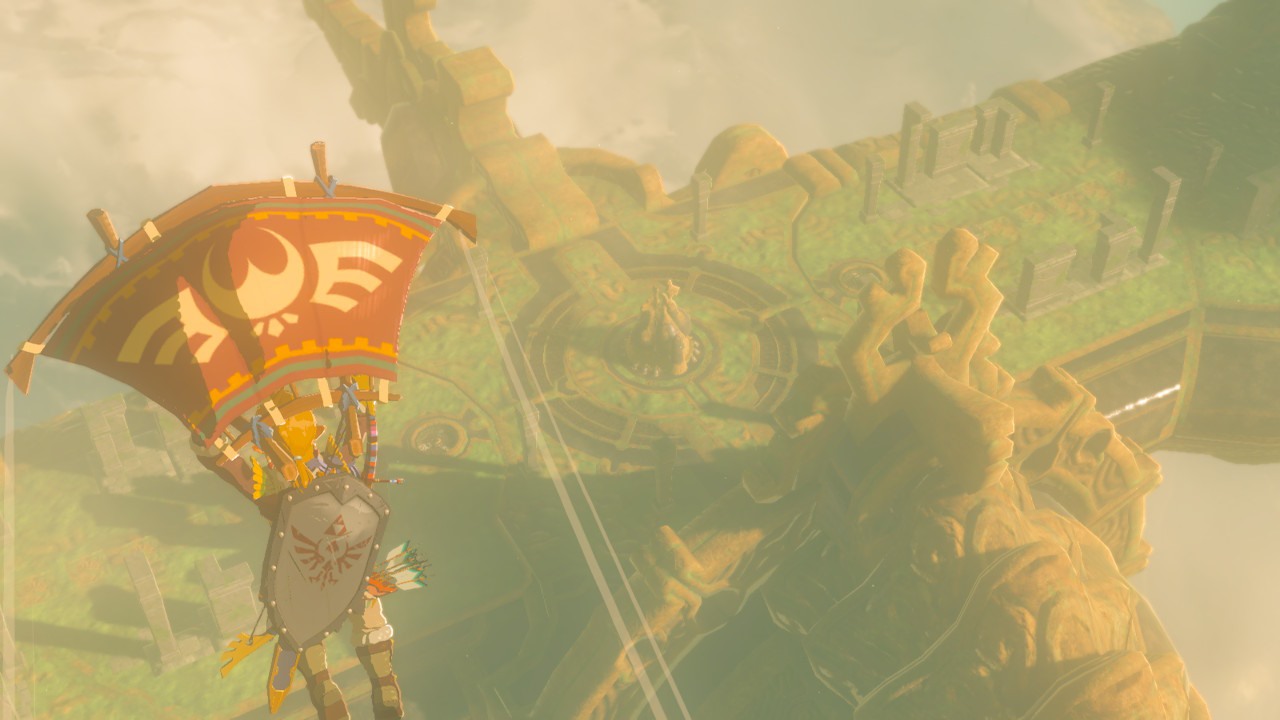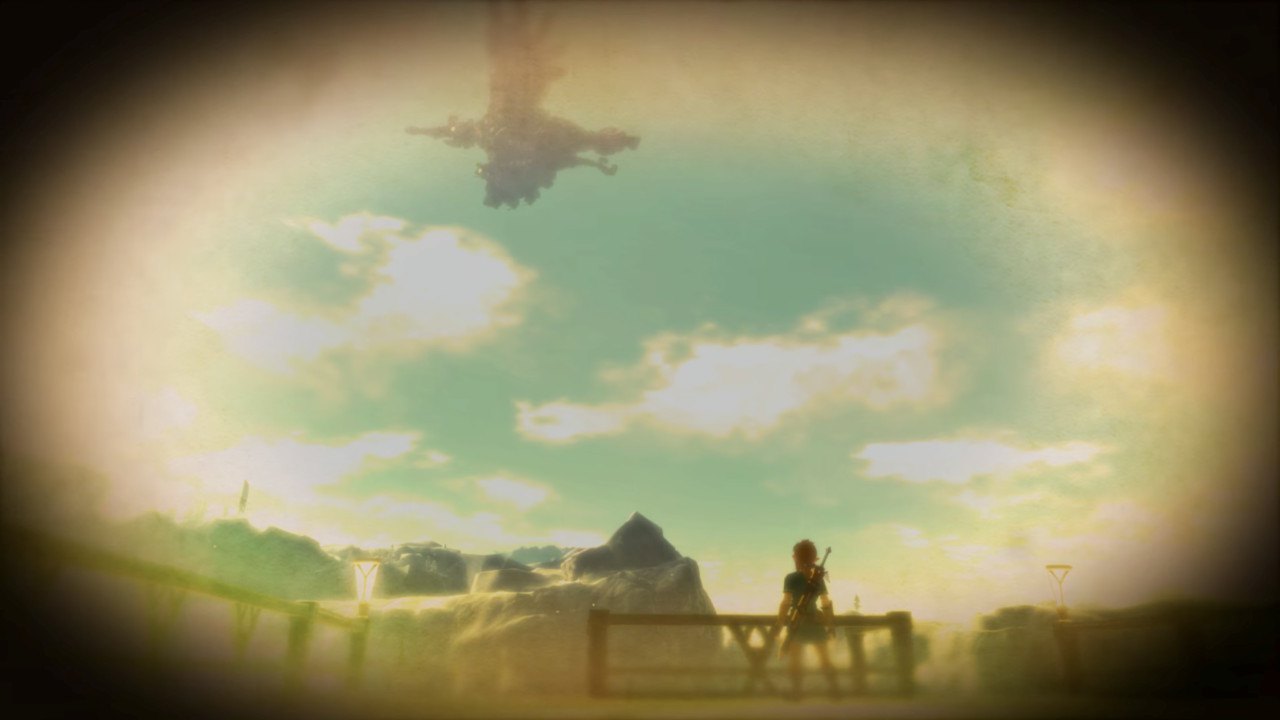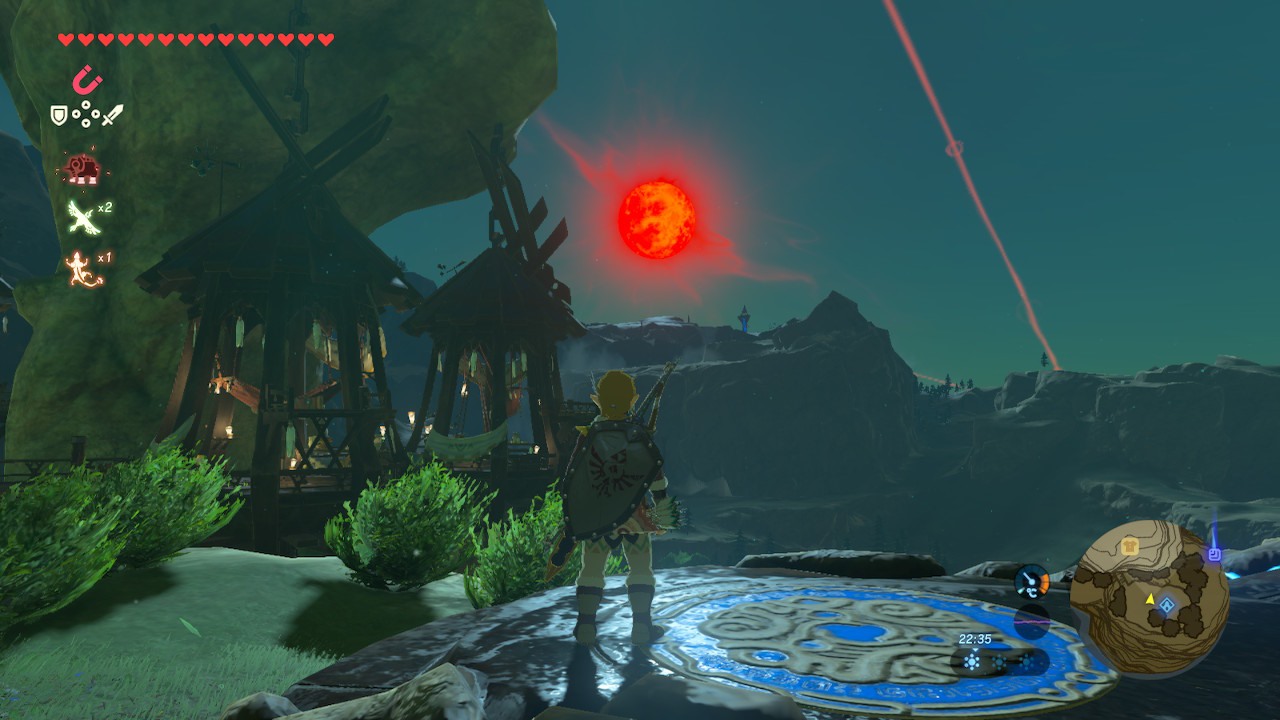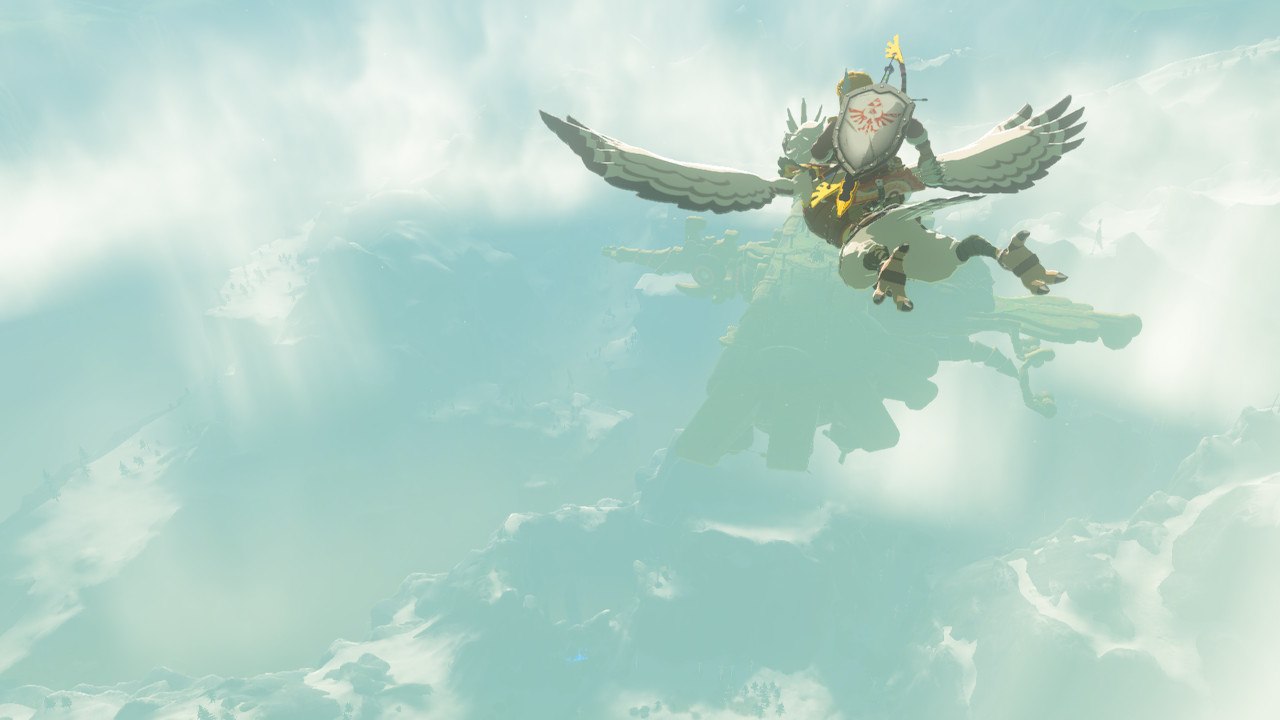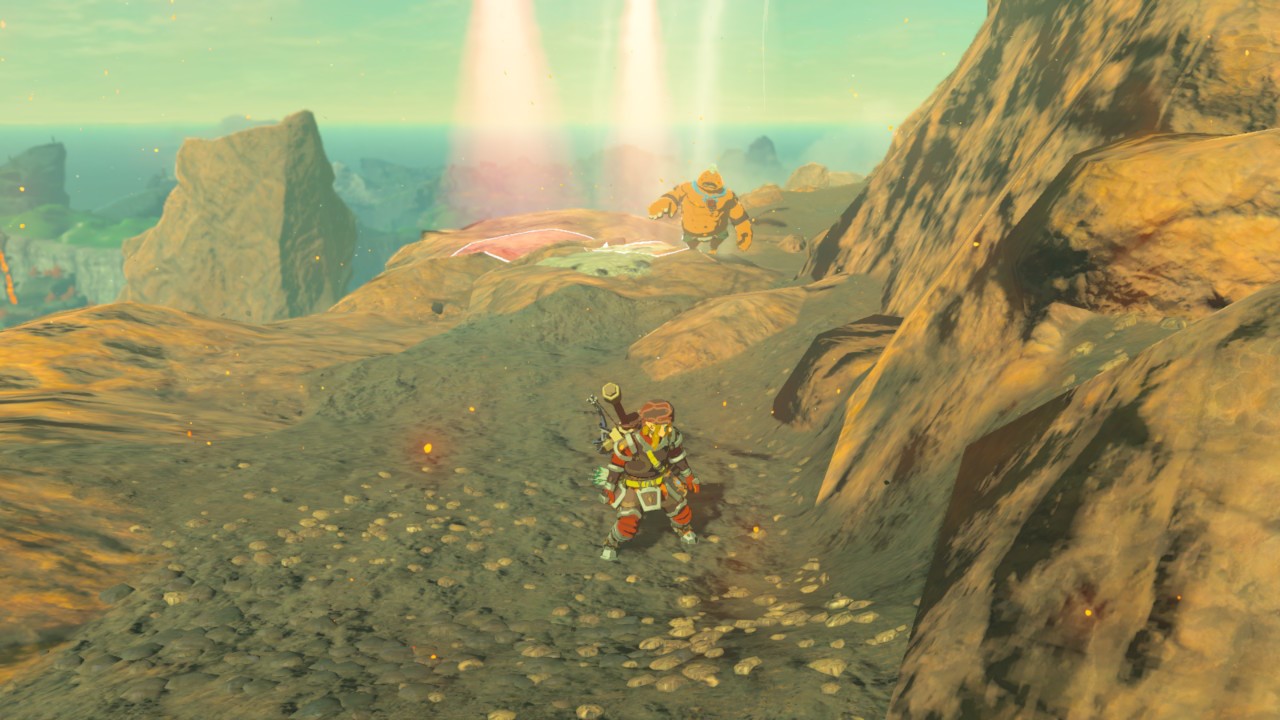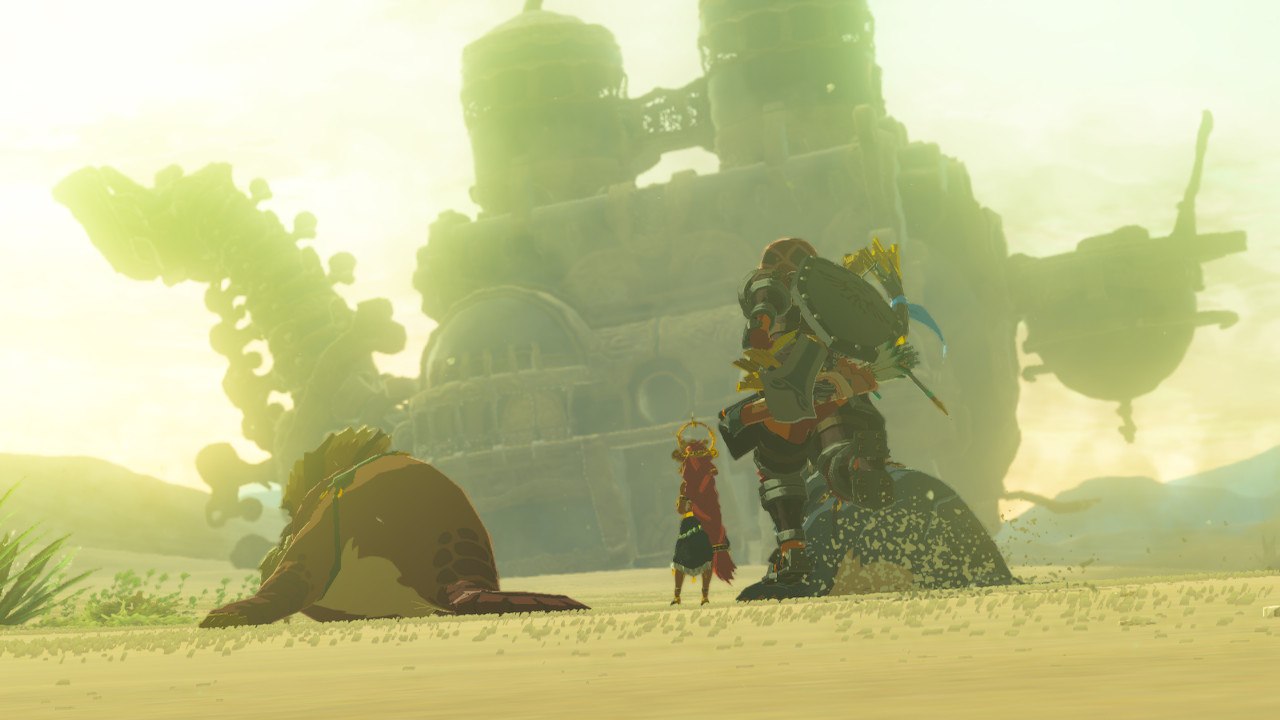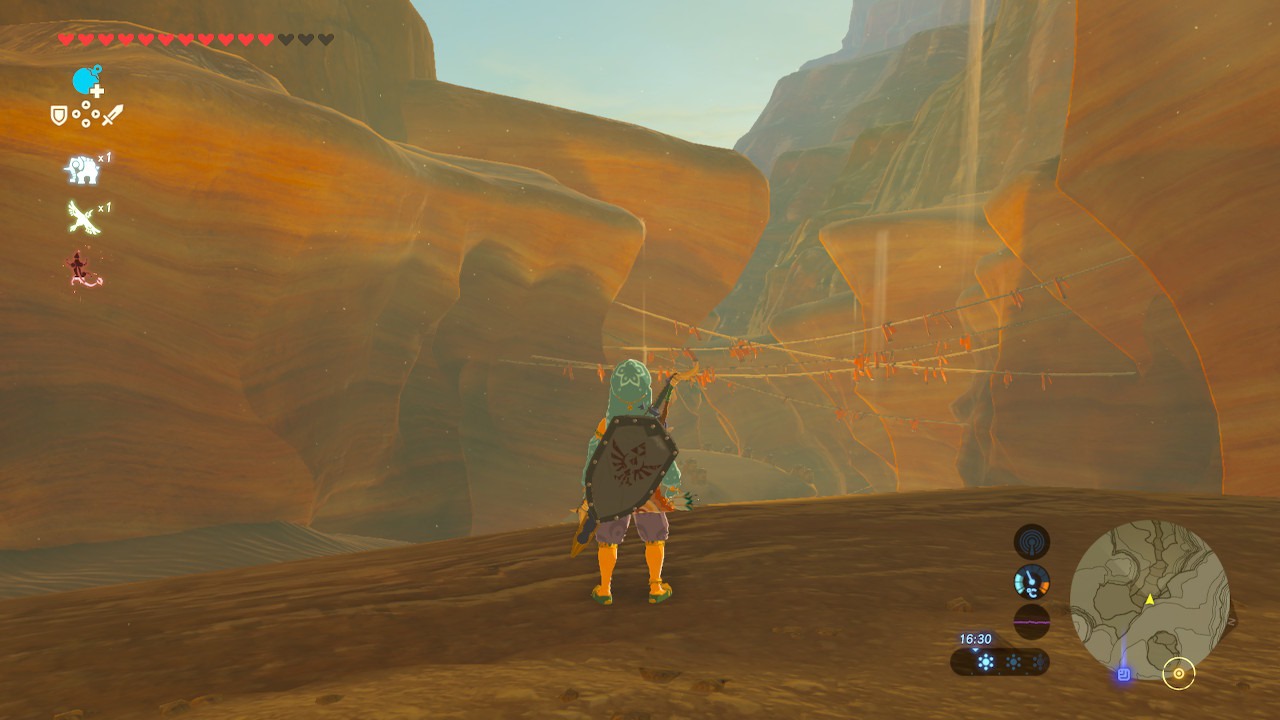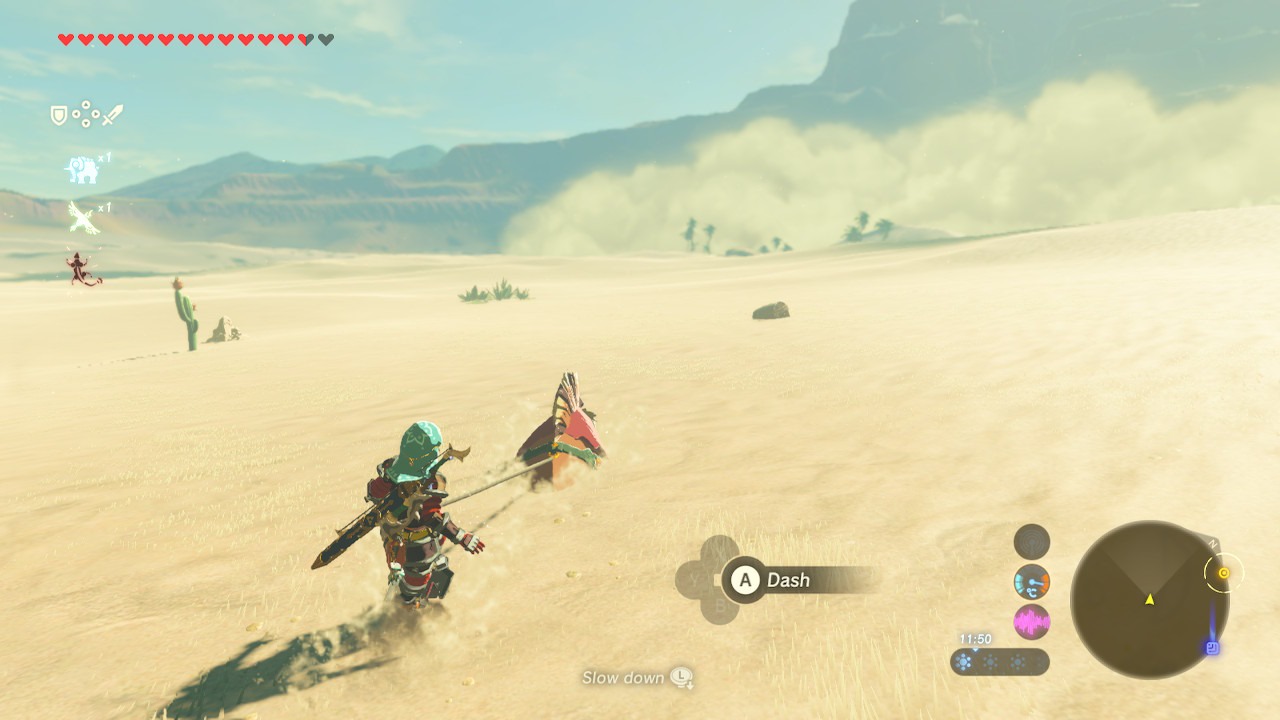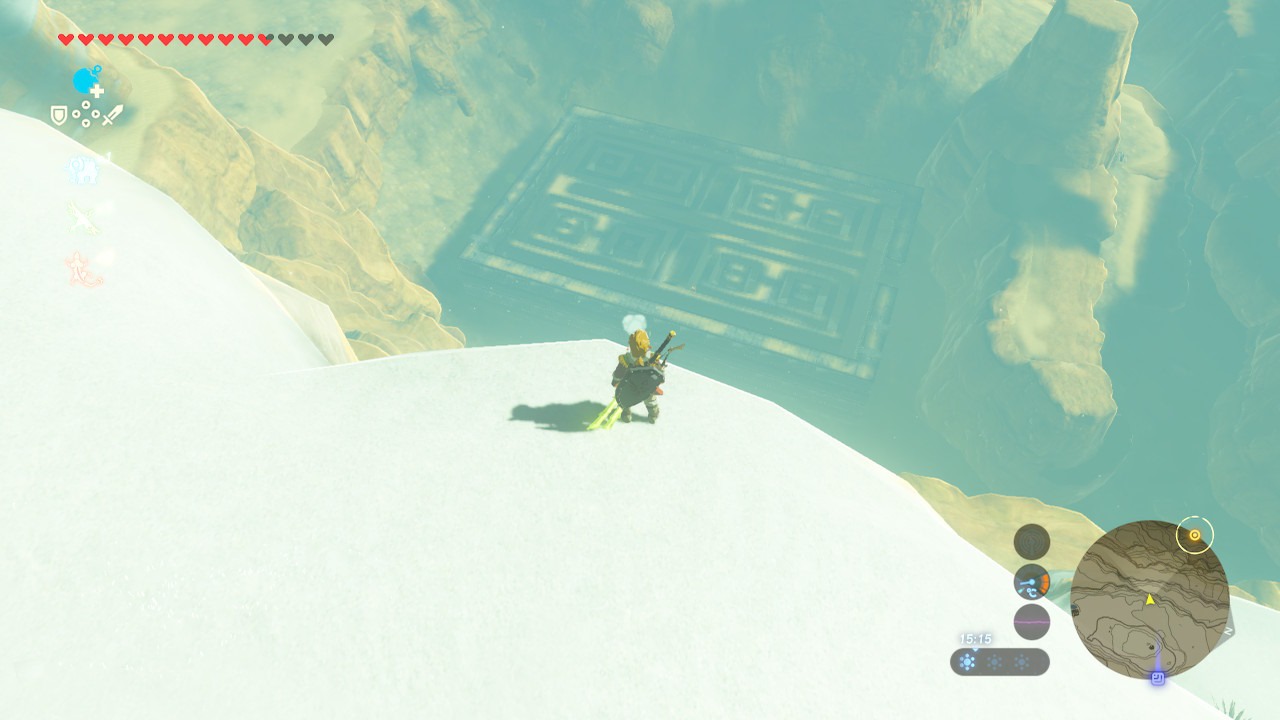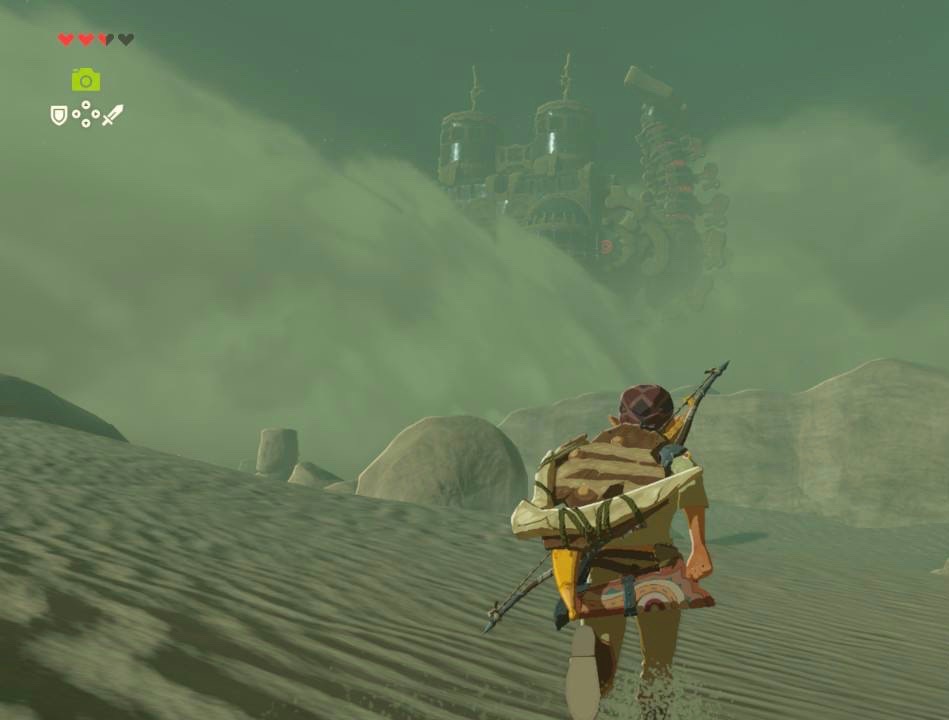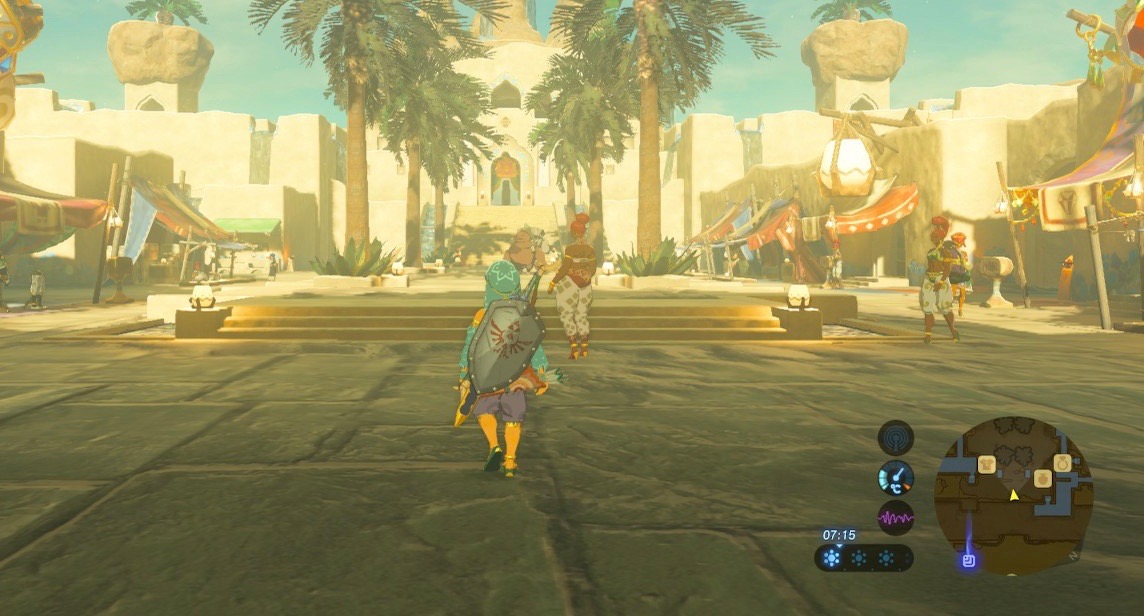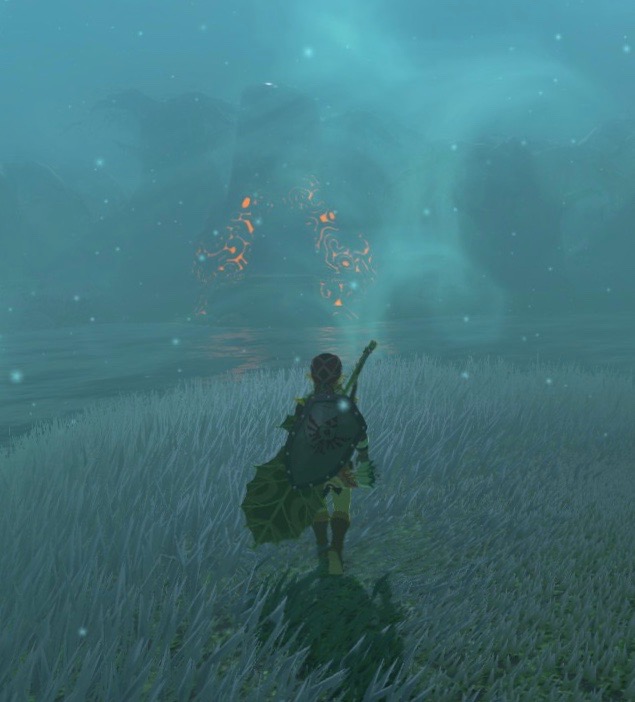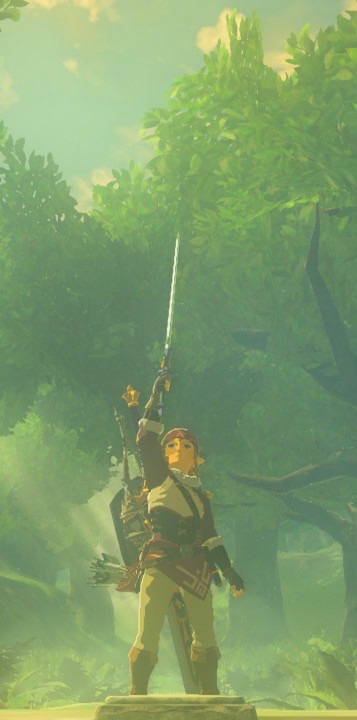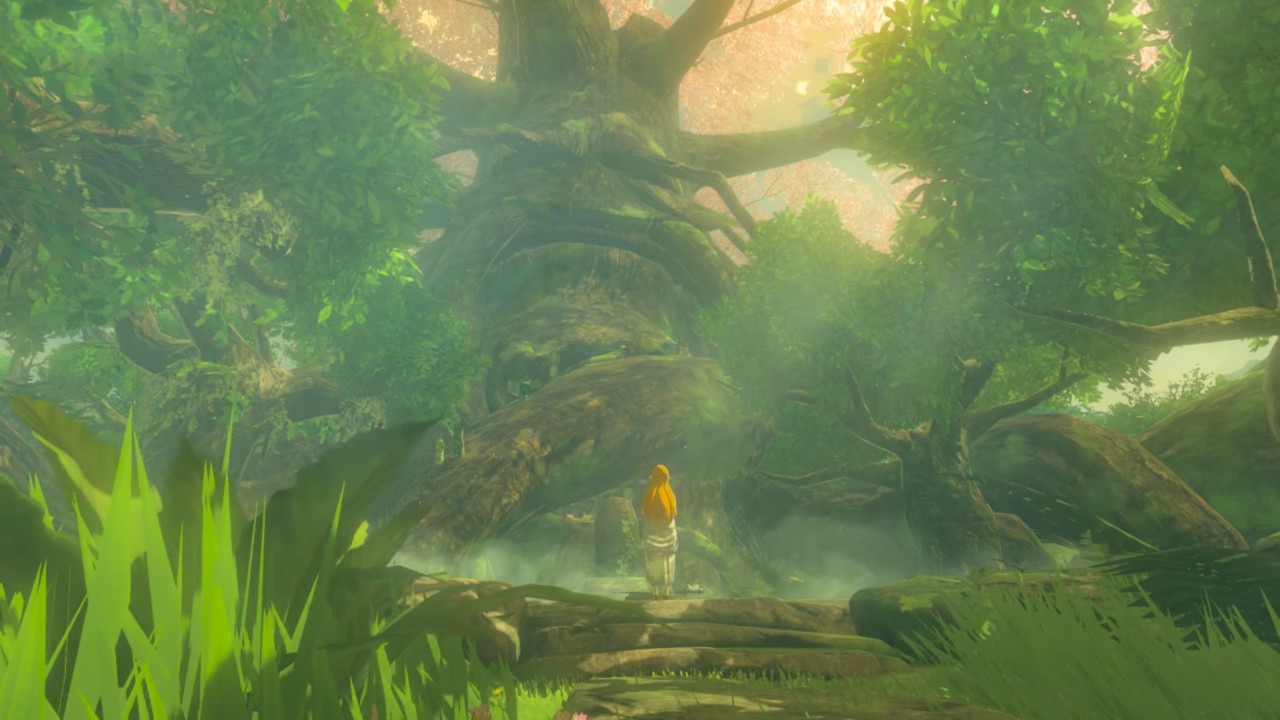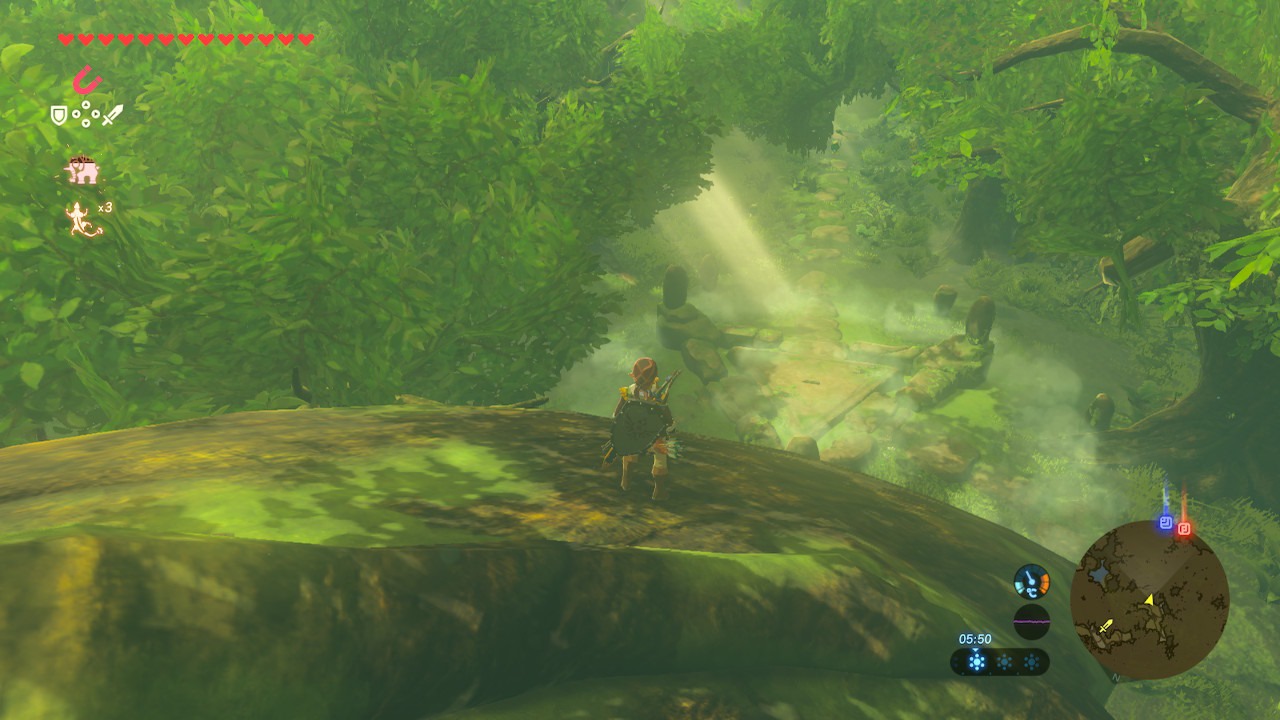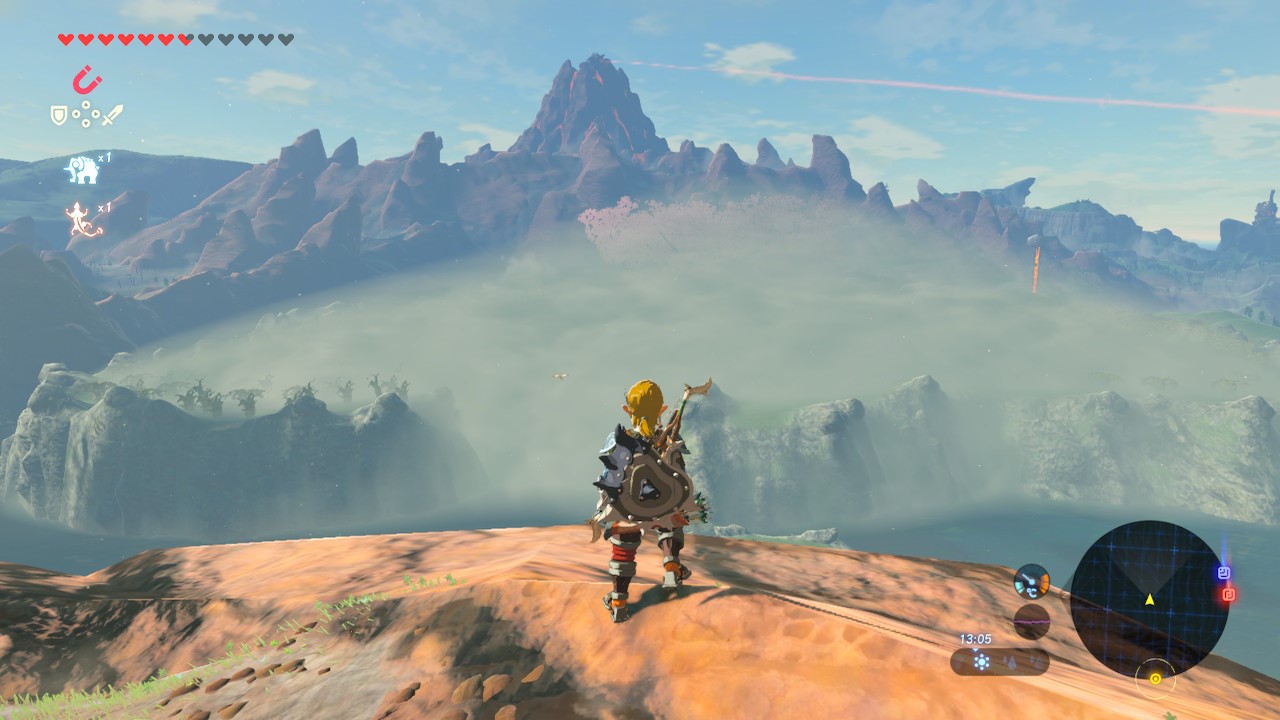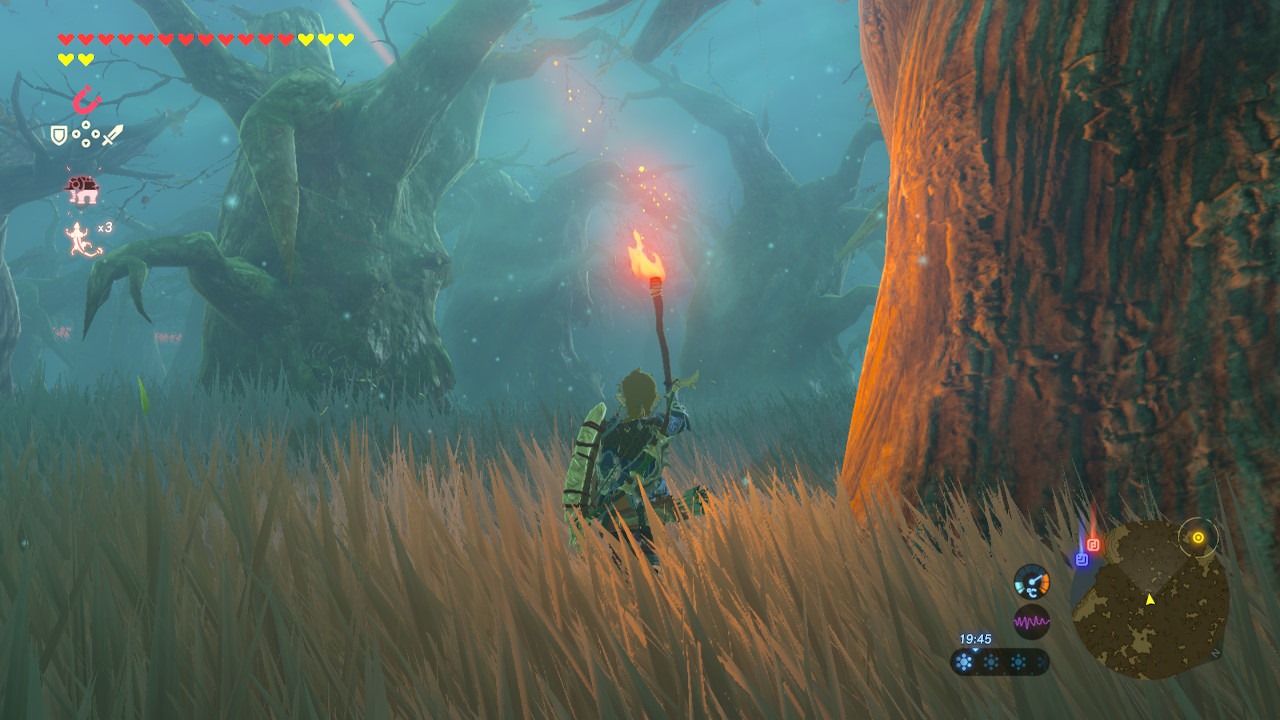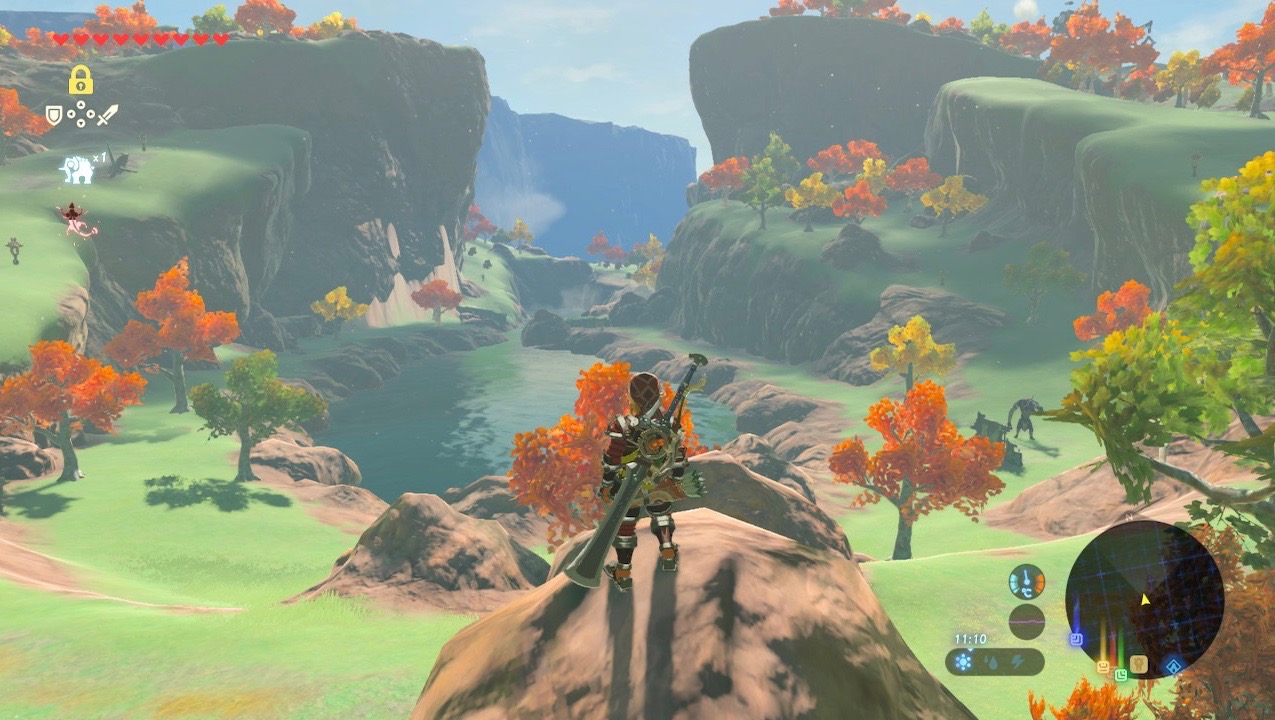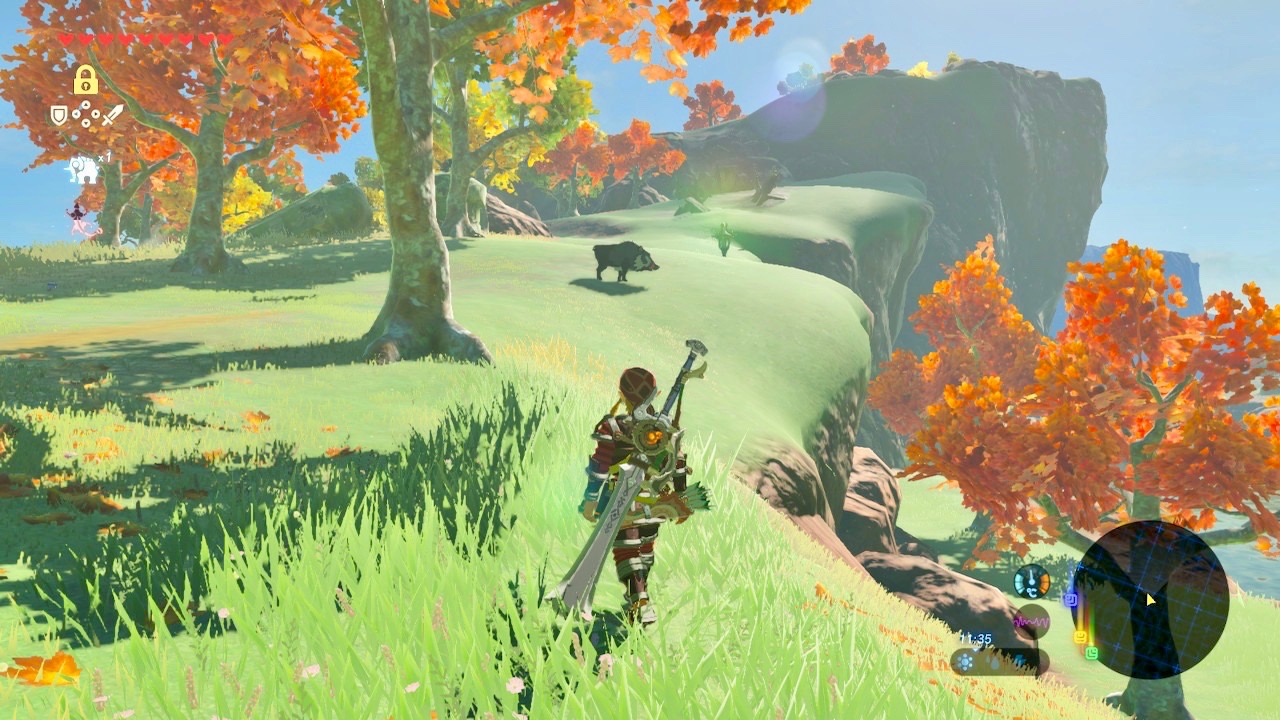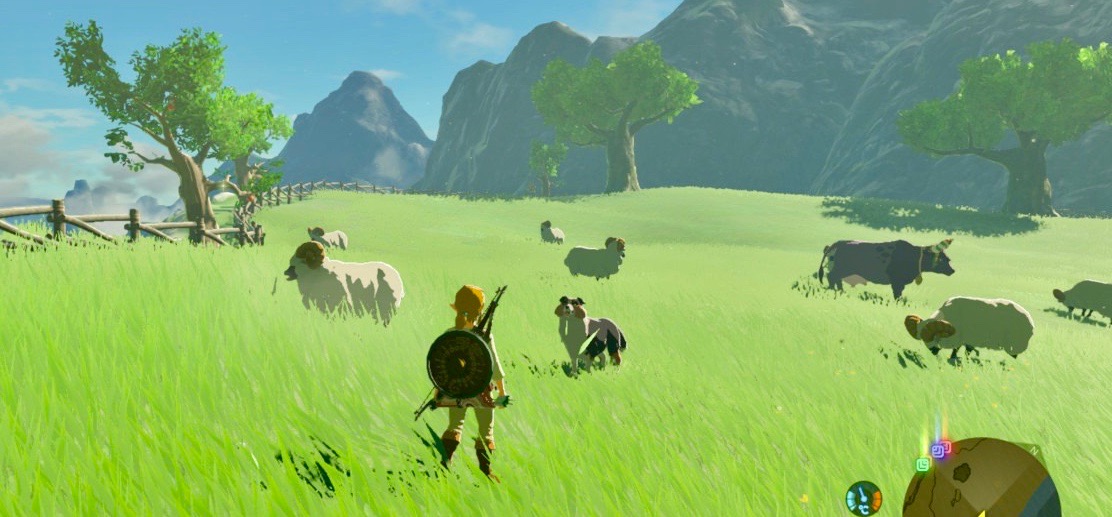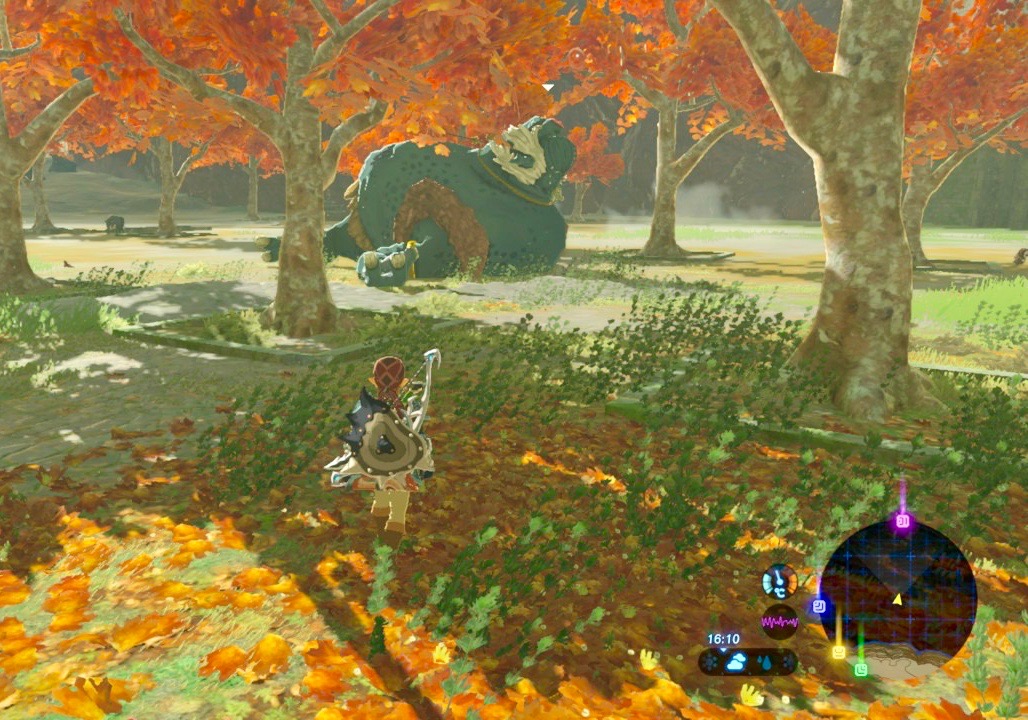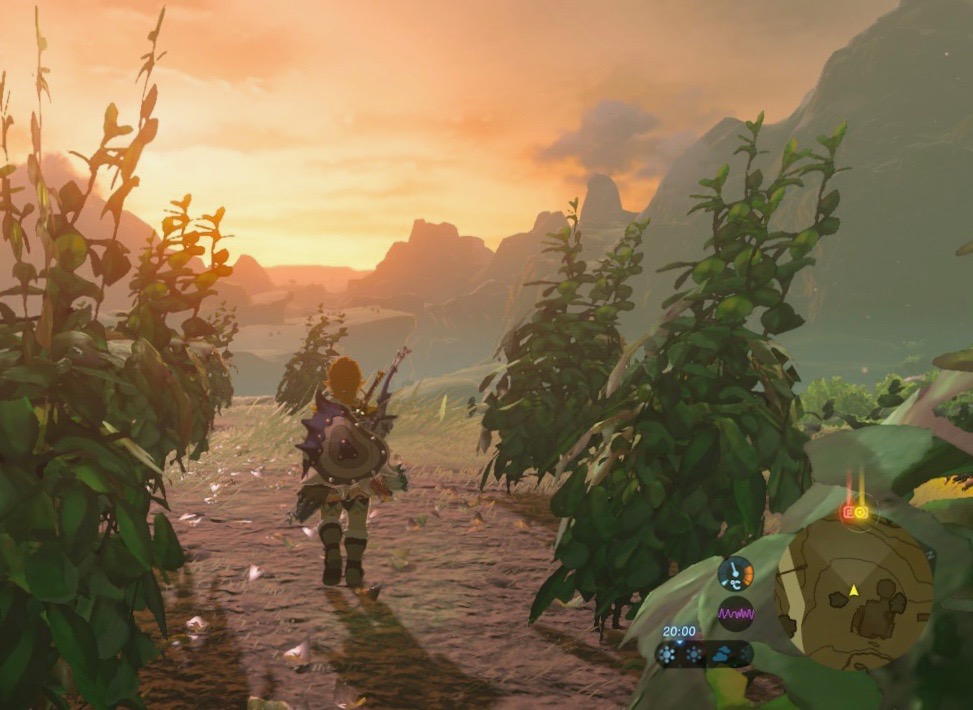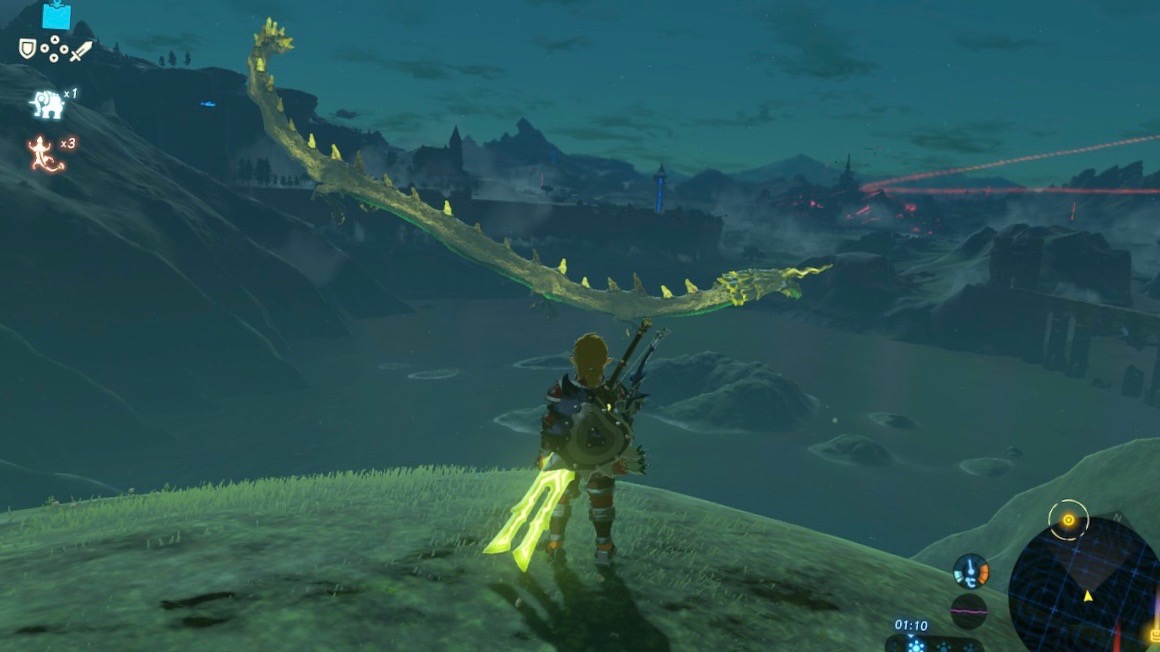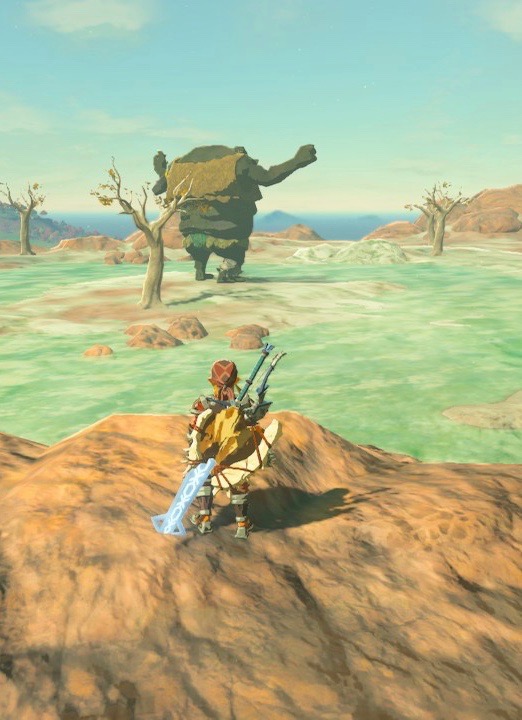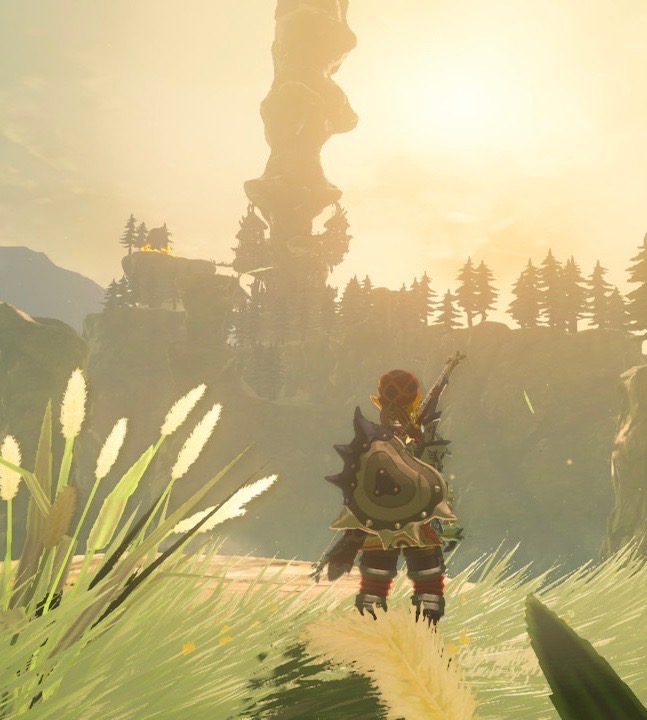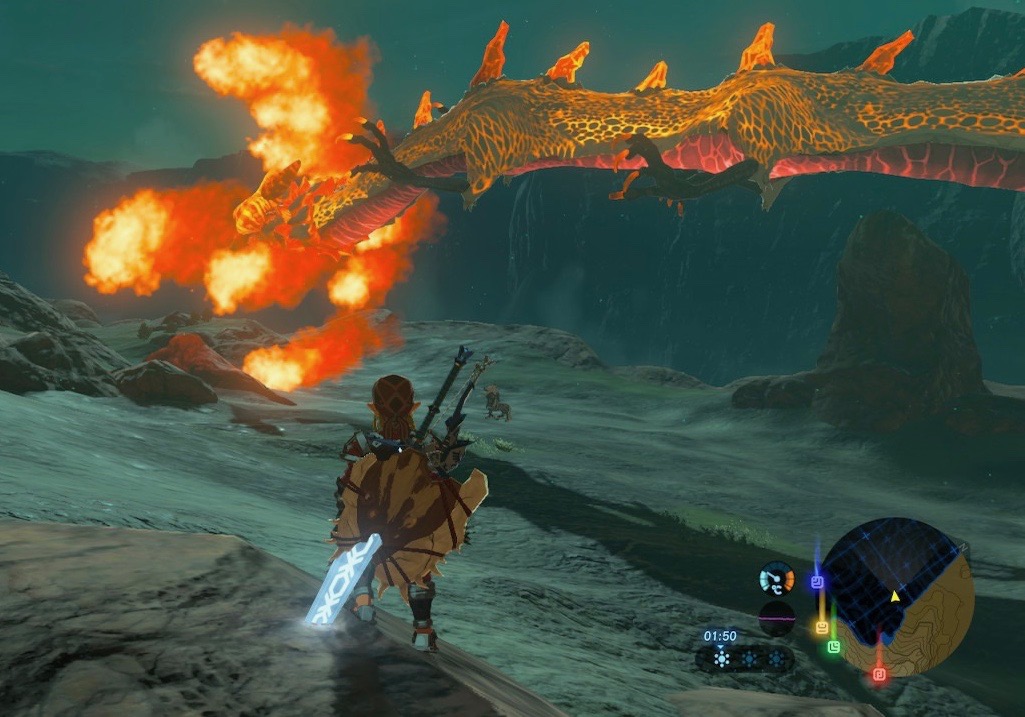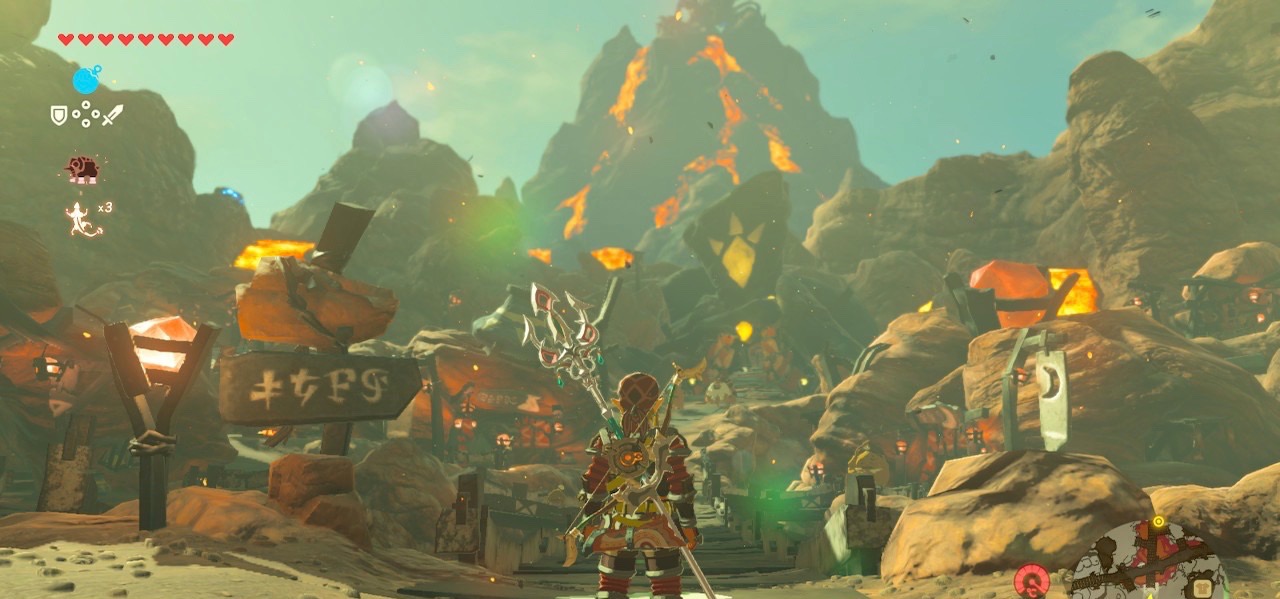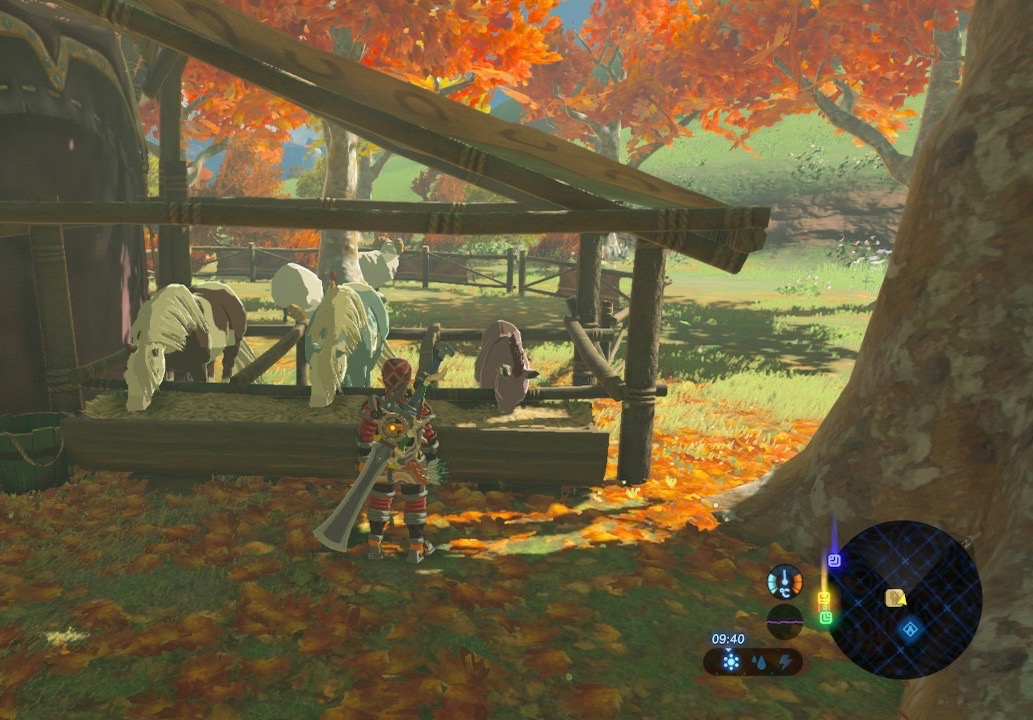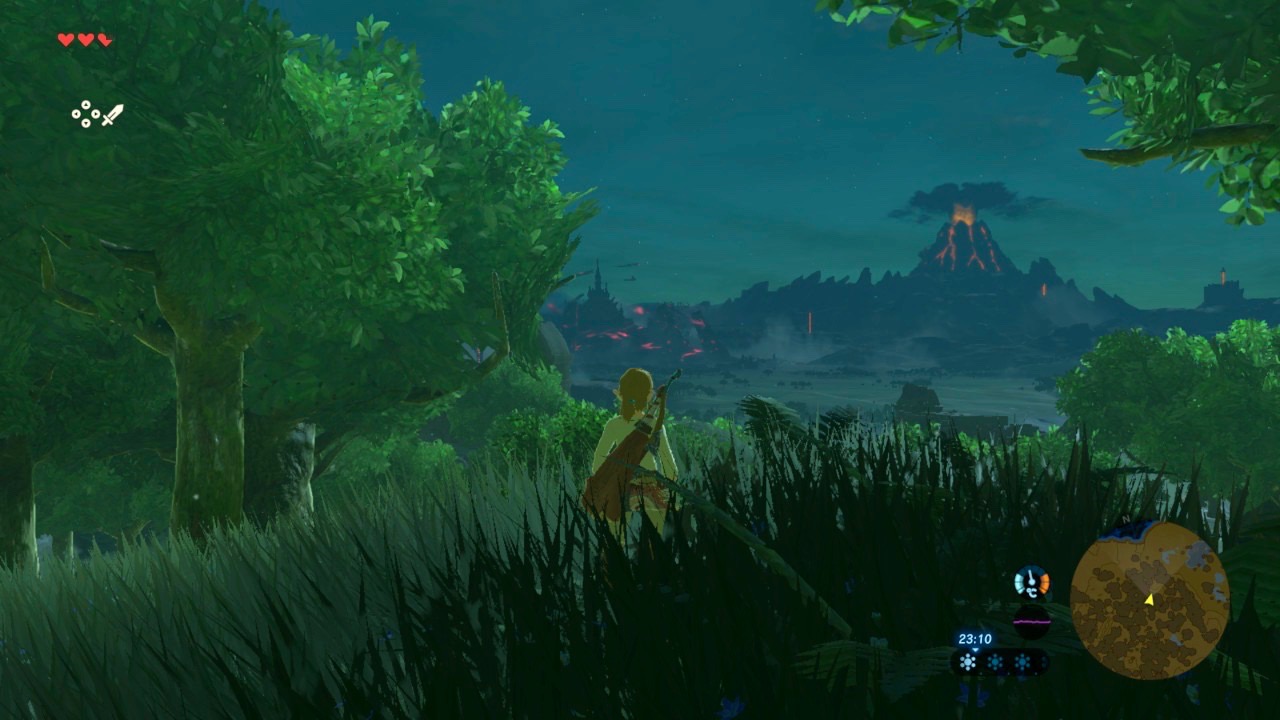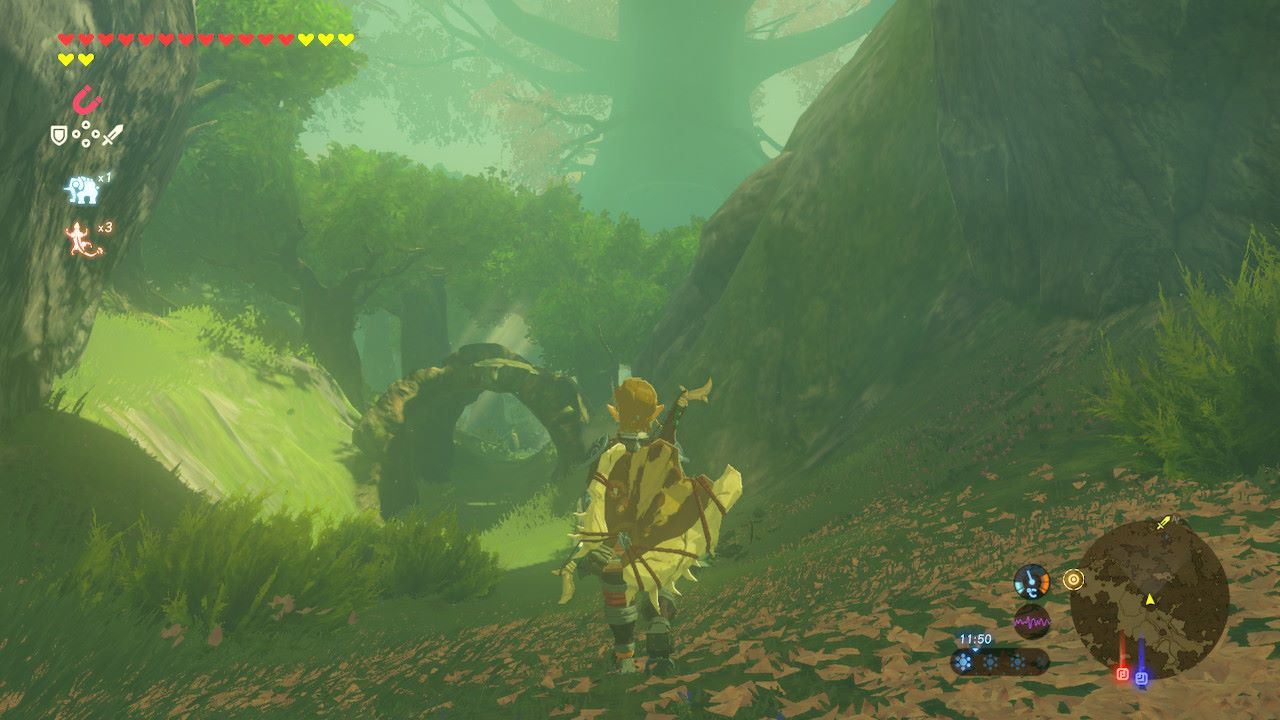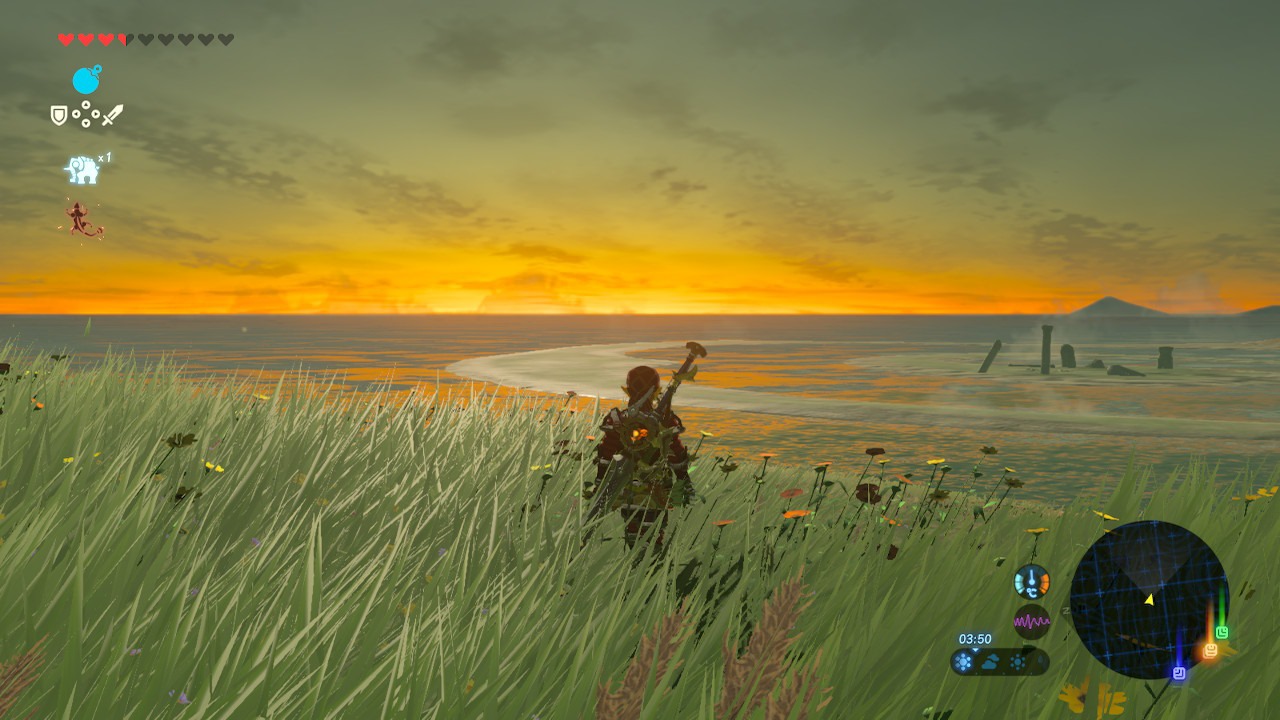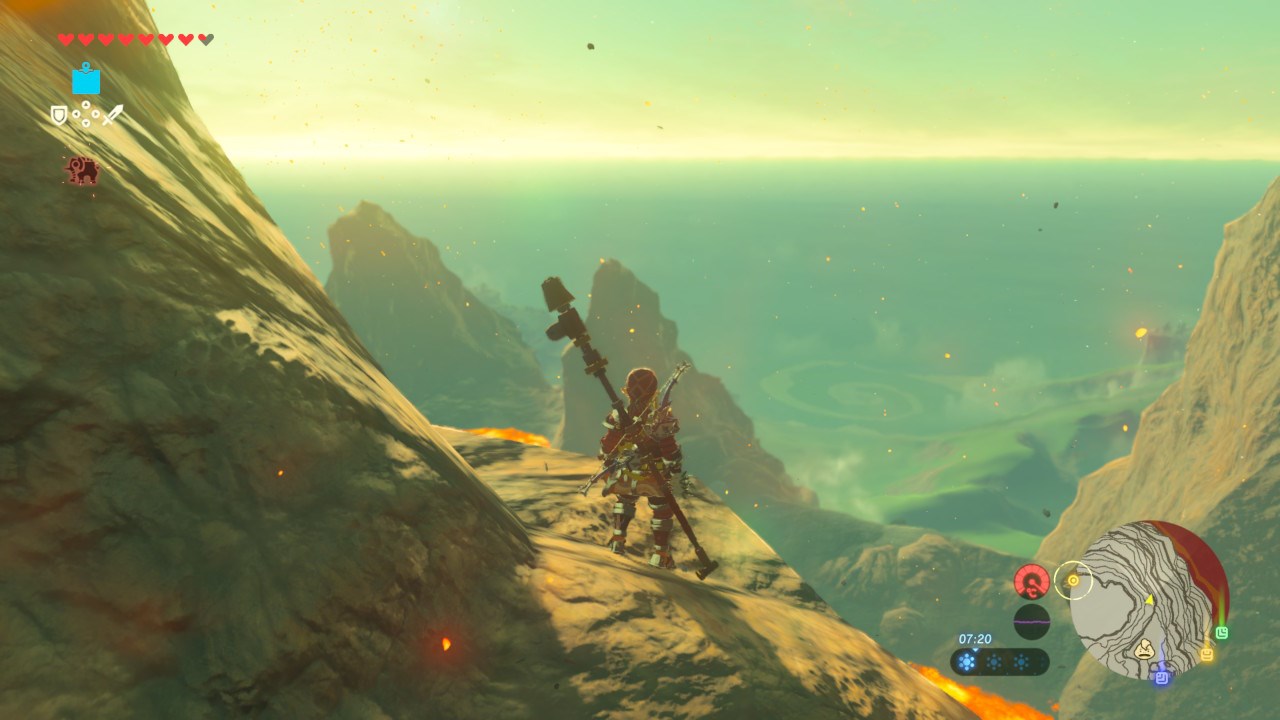The Legend of Zelda: Breath of the Wild(Nintendo, 2017) involves players in a world that actually demands exploration. It demands them to wander Hyrule, climb its mountains, and savour panoramic vistas. Lush grasslands and towering mountains create an environment for animals to thrive and offer a wilderness to explore and interact with. Combined with vibrant colours and natural sounds, the gamespace reminds one of an expressionist painting come to life. Yet, despite all its beauty, Hyrule’s natural world is dangerous. It confronts players with perilous mountain ranges and weather phenomena, like thunderstorms or hot and cold climates, deep chasms, and a partially dangerous wildlife.
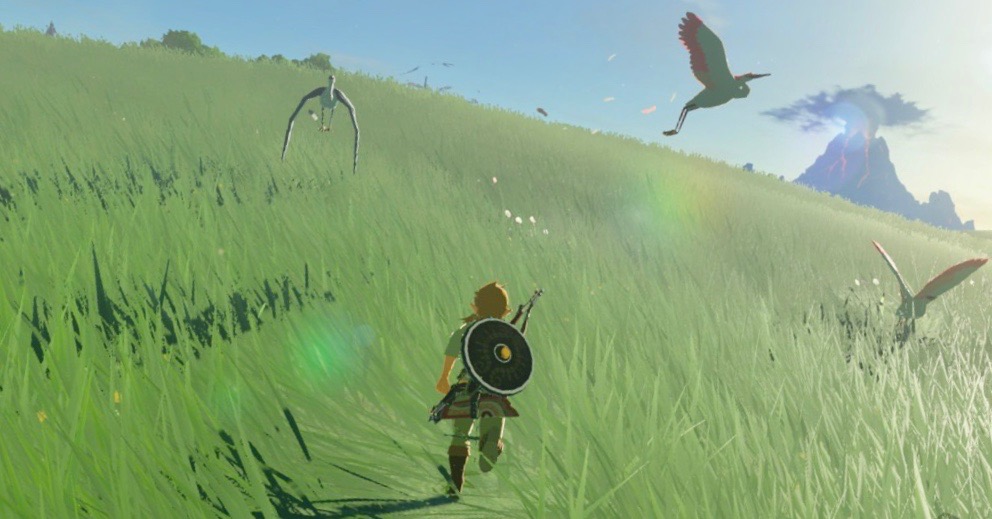
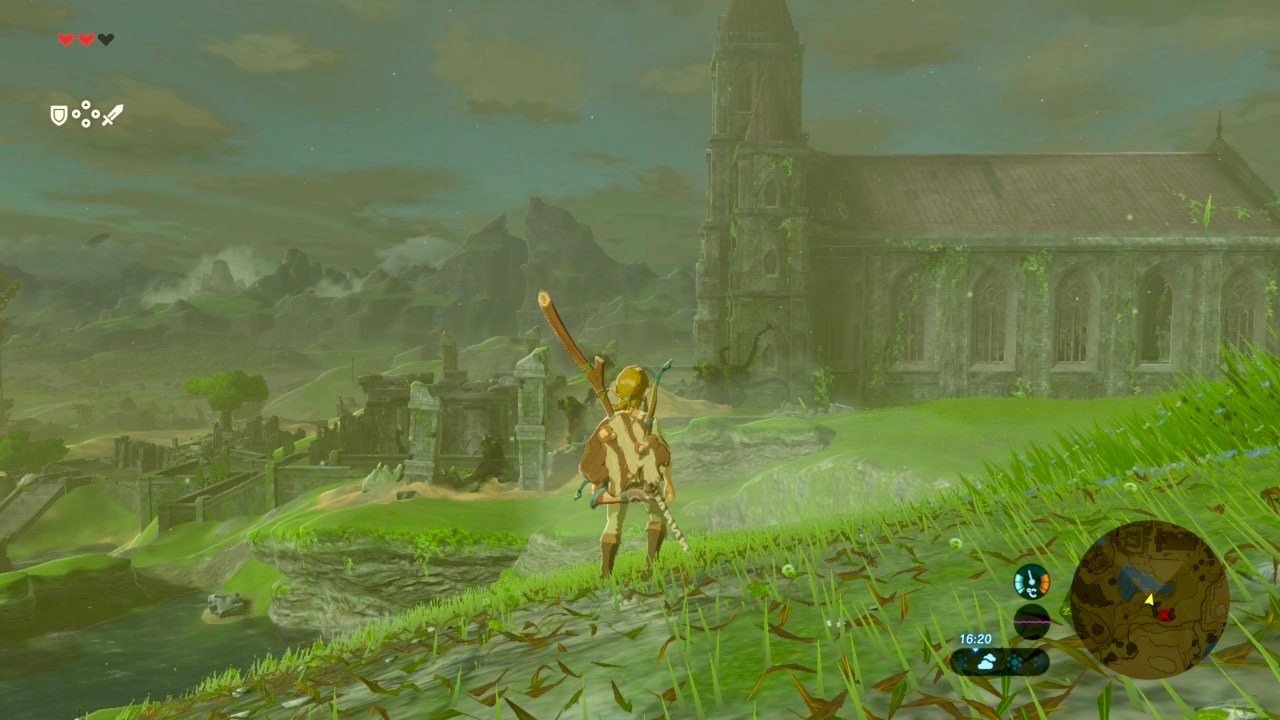
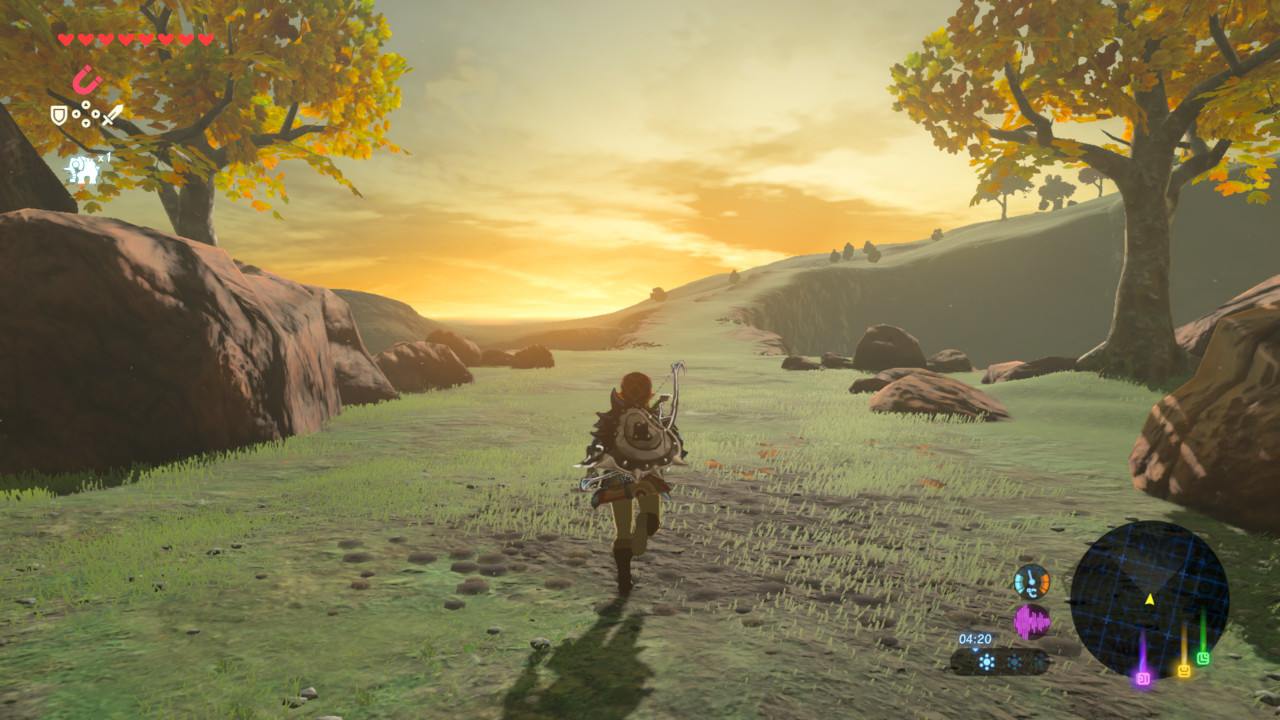
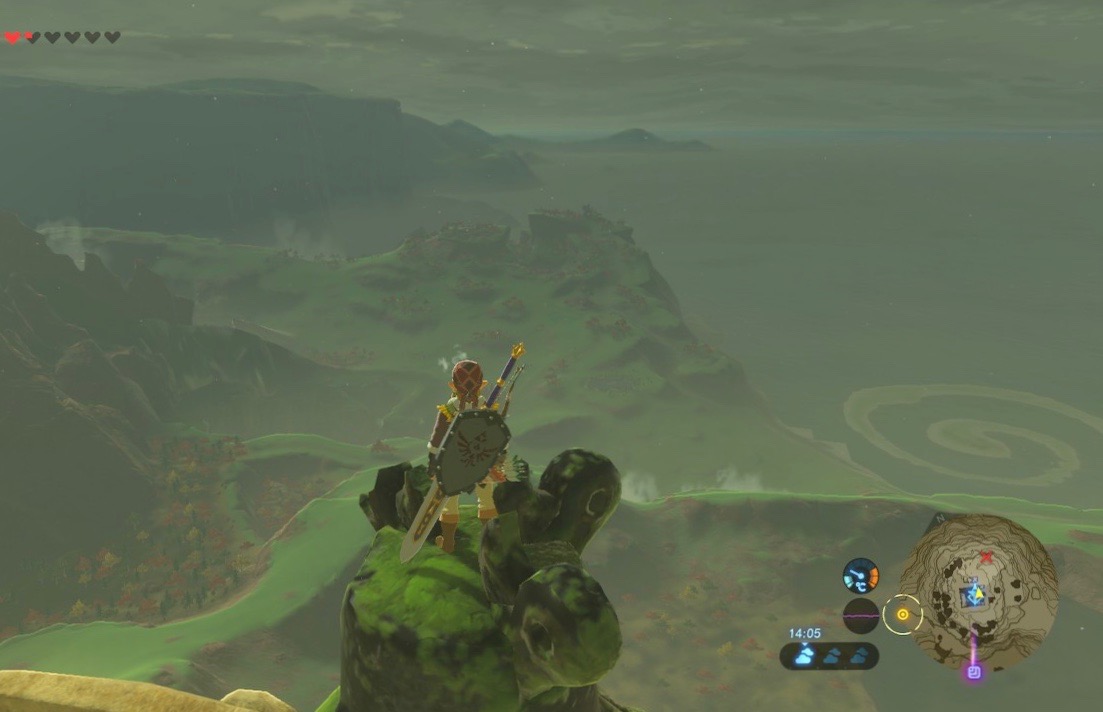
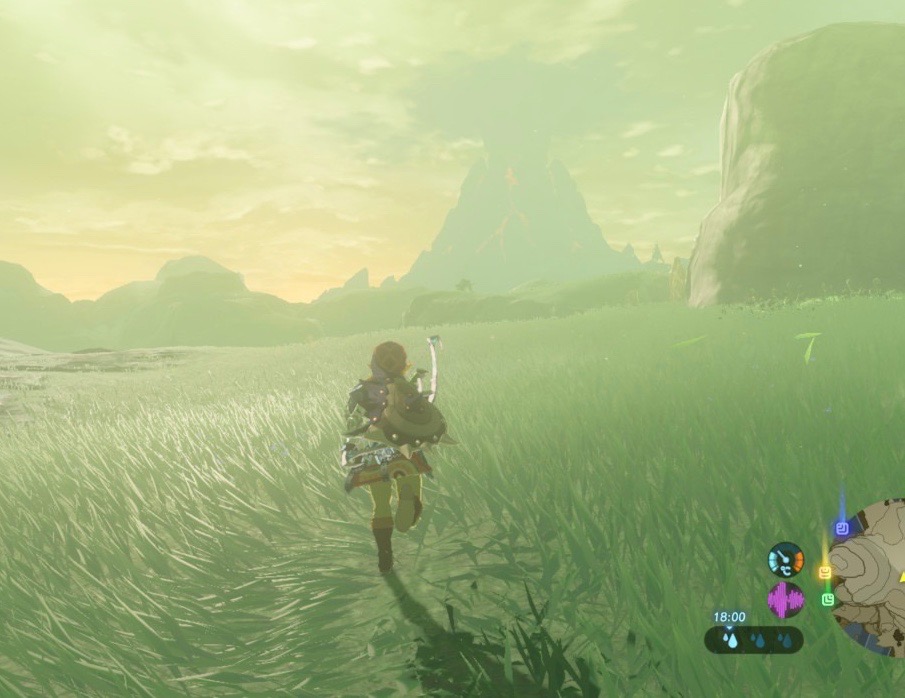
This thrill of adventure is an incentive to the game tourist to capture her/his venture on virtual camera, whereby the focus clearly rests on panoramic views that capture the vastness of the gameworld. The feeling this tumultuous experience creates is known as the sublime, a recurrent effect of artworks that represent the brutality and unfathomable appeal of the natural world. These nature experiences make players feel petty in contrast to the wilderness they explore and evokes in them reflections about life, nature, and culture, which gives way to new insights into existence (Burke 2017, p. 35-37).
For this purpose, the hero is sent on a journey to destroy the tyrant father, the pollution that plagues Hyrule (Ganon) and to restore balance to its ecosystems. Players thus embark on a journey to re-enact their Oedipal Complex—the son’s struggle against the father and for his mother’s (in this case nature’s) security.
Death Mountain
Probably the most obvious source of players’ emotional turbulences and the astonishment created by the sublime is the ascent of Death Mountain. The volcano can be seen from afar and from different panoramic perspectives as players steadily move closer. They might be surprised at the one or other view on it: for example, when they wander the lush fields of Hyrule, and Death Mountain majestically enters their field of view on the horizon. Streams of red lava are relentless flowing downwards, and the permanent ash cloud above the volcano’s peak reminds players of Ganon’s intrusion in its ecosystem. This experience from afar excites curiosity in players—it fuels their desire to reach and scale the volcano—but also respectfor an unknown Other, in observing its magnitude and unfathomable appeal.
Players need to be prepared here, otherwise their journey will be brief. For it is not only monsters and the narrowness of the route that exposes them to threat but, more importantly, the scorching heat and the element of fire. This is so because the entire region is plagued by the Divine Beast, Vah Rudania—a gigantic mechanical lizard that causes tremors and is responsible for a severe increase in temperature.
Even the Gorons, who are usually accustomed and adapted to their hostile environment are suffering. They are a friendly race, organised as an industrial culture and in social hierarchies, who treat Link with respect and as one of them. Players may easily become attached to the Gorons and admire their values and affectionate way to treat one another. Such affects and emotions evoked by the encounter with this culture serve players as an ethical incentive to help them defeat Vah Rudania and to restore balance in a disturbed ecosystem.
Yet, the way to the peak is filled with hurdles in a barren, at times, unbearable environment, which players have to overcome as heroes. There is only one way that stretches upwards in a circular fashion and which blocked on both sides by large cliffs and lava streams. Burning enemies are plentiful, and there is a variety of other obstacles such as falling rocks and flying Sentries that aggravate Link’s ascent, causing distress and terror in players.
Most perilous, however, is the unbearable climate. To climb the mountain, players have to search for a means to endure the burning heat and equip the right gear (for example, wooden swords and shields will burst into flames). This is possible in that they either buy an elixir at the foot of the mountain that protects them from heat for a certain amount of time or in that they stack up on food, which attenuates the loss of life energy, but whose half-life is even lesser (players may only acquire the Flamebreaker Set in Goron City, which is located high up on the volcano).
This results in the emotions of haste, frustration, and distress, when the game system in combination with players’ interactions and the entrapment through the world’s labyrinthine structures evoke terror. Yet this sense of terror also leads to delight through play and the excitementand joy the thrill of adventure entails.
Zora’s Domain
In Zora’s Domain, torrential rain and darkness aggravate players’ perception and have the element of water shine in a different light—as disorienting and mysterious, where danger resides underneath the surface of river streams and vast lakes. Yet, there is also an element of the sacred in Zelda’s water bodies, an aesthetic presentation that seems to highlight the presence of the divine and the otherworldly in them. There are many wondrous things awaiting, without harmful intentions (such as animals, other travelers, treasures, and the promise of sacred temples), as well as ill-willed monsters hiding within the element of water.
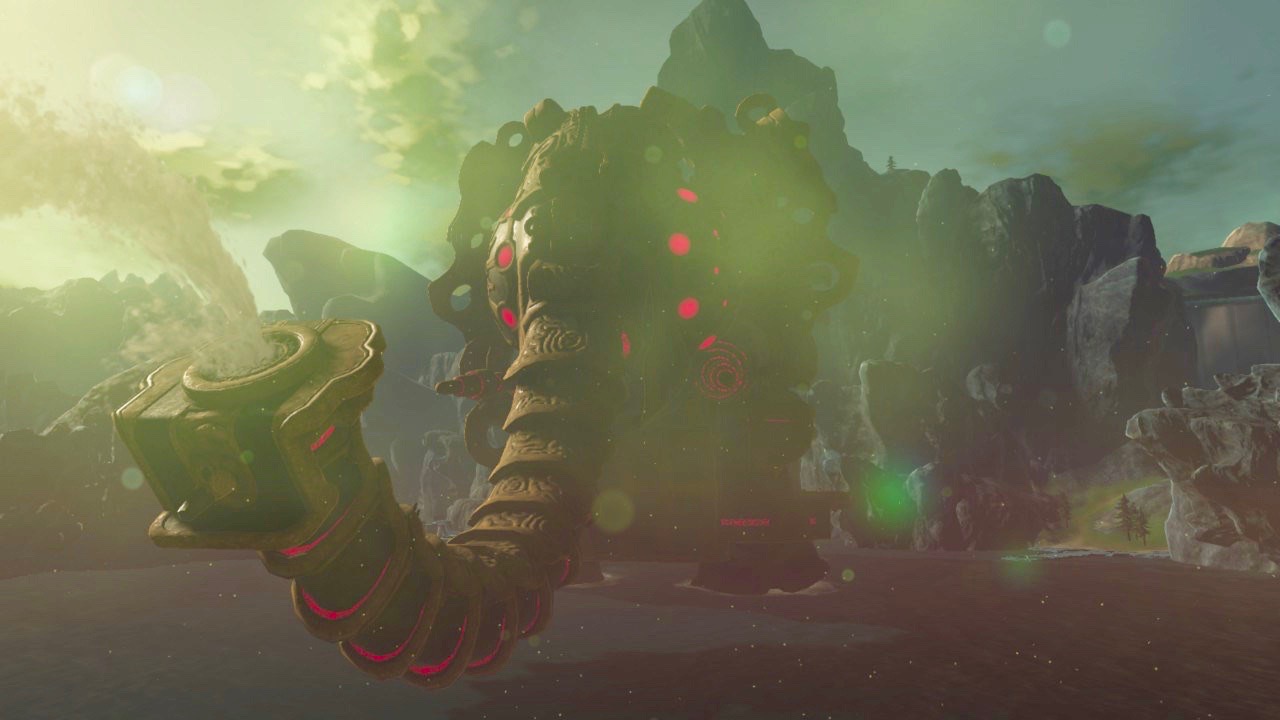
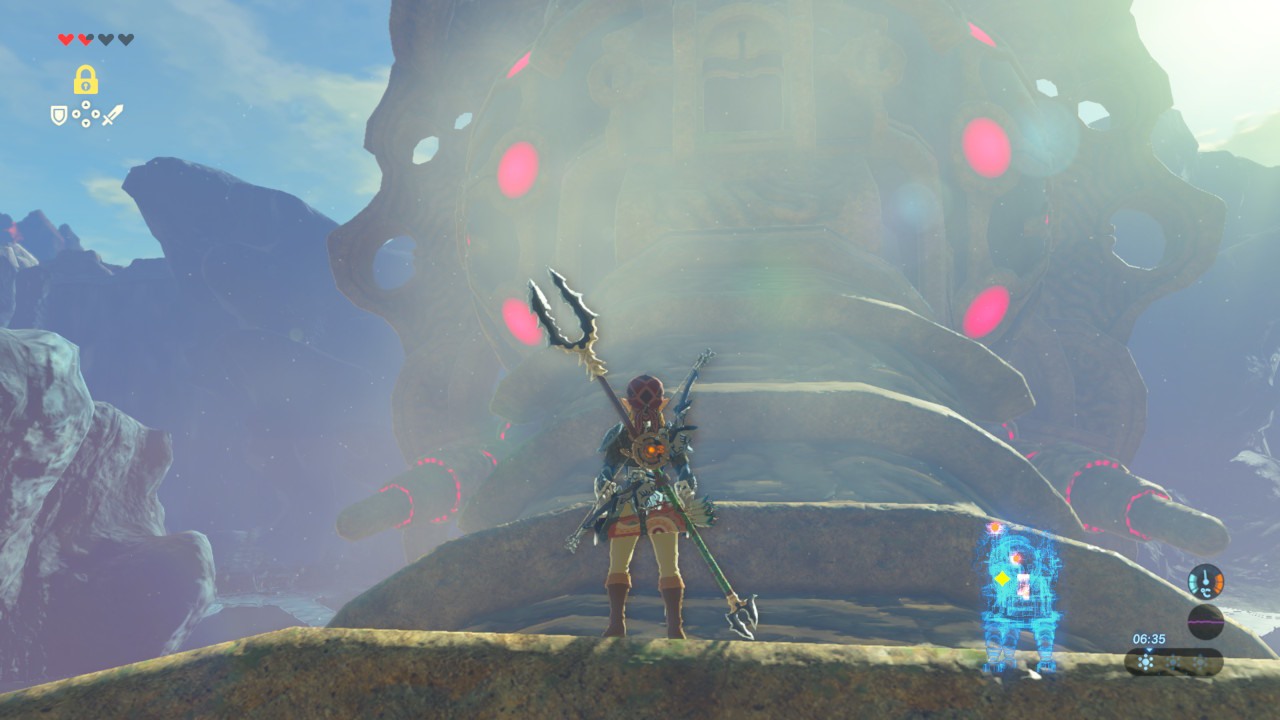
Due to Mipha’s death (the Zora princess and pilot of the Divine Beast Vah Ruta), caused by the Calamity and Link and Zelda’s failed mission to defeat Ganon in the past, the Zoras have started to disdain the Hylians. Therefore, the Divine Beast Vah Ruta does not only function as a cause of imbalance due to Calamity Ganon’s presence but also stands as a reminder of Mipha’s death and Link’s (and the Hylians’) guilt in failing to protect her.
Rito Village
The Rito are a proud nature culture of bird-like specimen. Their appearance is colourful, as are their homes, situated high up (like bird nests) on a towering and narrow cliff. Houses are built around the rock structure and wind up alongside a wooden staircase. The location is surrounded by deep chasms, forests, and grasslands. Various platforms are located high above the grounds and allow the Rito to practice their flying and combat skills, but also facilitate their distribution of goods throughout Hyrule.
These endeavours are severely restrained because of Ganon’s intrusion. For the trade and warrior race are suffering from environmental hazards, as are the other cultures of Hyrule. In their case, the Divine Beast, Vah Medoh, is shooting down anything that flies in the vicinity of Rito Village, which not only restrains the Ritos’ commercial business but also their way of life and leisure activities. Link and the player are treated well by the Rito, with respect, which may result in admiration and the will to help them calm the Divine Beast.
Rito Village and its surroundings are different from the other regions in Hyrule. It is a most tranquil place and hub space surrounded by an open, peaceful, panoramic wilderness. Here, players experience majestic vistas from high above and ponder the natural beauty of the untouched wilderness below. They look into deep chasms and savour the thrills of jumping from the platforms to glide across vast stretches of land. The element of wind is foregrounded by the Rito region and in players’ use their paraglider. It culminates in the encounter with Vah Medoh in which Link uses the streams of wind within and outside of the Divine Beast to solve its riddles.
Gerudo Desert
The terrain of Gerudo Desert is a vast, open space with small oases serving as safe havens, which renders an impressive view for players, astounding them in most diverse ways. The scale of the desert is overwhelming, hostile to exploration. The desert is empty, monotonous, hot and cold, not made to be traversed. On entering the area, players get lost in this world, filled with sandstorm mazes and only few calming oases, which are gardens that provide relief from the wild nature.
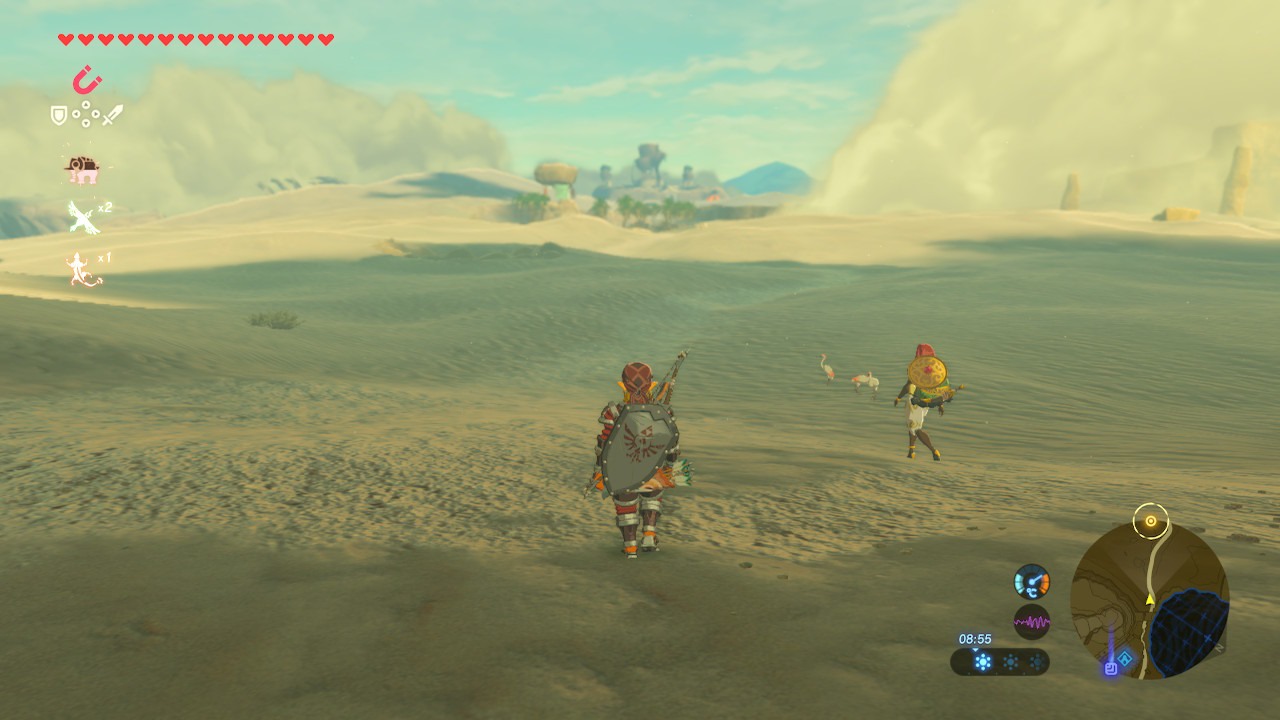
Especially the extreme temperatures make traversing the desert area highly dangerous: during the day the sun heats up the terrain, whereas at night it becomes freezing. The alternation between these temperatures becomes a strategy for instilling distress and haste in players. For especially badly equipped players cannot hop from one oasis to another to traverse the dangerous desert and often fail to stay alive.
To survive in this hostile environment, they need to prepare for both conditions, either by equipping the proper gear (warming or cooling armor), the corresponding elemental weapons (fire and ice), or bringing cooling or heating potions.
The Gerudos are a conservative race, a matriarchal society of warriors, depicted in a highly orientalised manner. They are a proud and sometimes violent people with a strong hierarchy and a society shaped by women (a man is only born every 100 years). The emotions created here are primarily respect for the Gerudos and their power, but also curiosity for their culture, or even its rejection (as it strongly differs from a westernised or Japanese perspective). This fear of the Other is especially instilled upon first entering Gerudo Town, which can only be accessed by females of any race. After receiving the female Gerudo Set, Vilia, the seller, warns players of the wind that could expose Link as a male by lifting his veil. This, of course, cannot occur (it is not a possibility within the game system). However, players are not aware of this facet and fear being exposed in the Gerudo society. Here, the fearof Otherness becomes the fear of becoming the Other, and being punished for being different. This sense of terror is also felt by players, as they participate in and make their way through this confining ideology.
Gerudo Desert is a magnificent example of the sublime’s fascinating spell. It shows how all game elements come together and subject players to an entity that is ungraspable for them in its entirety. The vastness of the gamespace and its mazes, the Otherness of characters and monsters, and the opacity of the game mechanics—limited visibility, the lack of a map, the constant danger from heat or cold, which means players are never at ease to explore—make the Gerudo Desert almost a textbook example of how games can evoke the affective and aesthetic response of the sublime. This astonishment is also felt for the elements, which again have players renegotiate their functionality. While windand earth are clearly depicted as perilous here, fire and watercome to players’ aid in attenuating the effects of the extreme temperatures or in seeking shelter in the oases.
Korok Forest
Korok Forest is situated in the central northern area of the world map and at the heart of Hyrule. It interconnects the different game areas (and also Central Hyrule) and functions as a source of wisdom and power: with the Deku Tree located in its centre and the Master Sword as an efficient means to defeat Ganon. Korok Forest can thus be seen as the ecological epicentre of Hyrule that holds in balance the elements surrounding it, but which is also isolated for this reason, protected from the outer Hyrule and its potential pollution.
When players approach the area, they notice that the forest lies on an island covered in deep mist, where only one entrance grants access to its realms. Light and darkness now alternate as players move further into the forest and experience a place of utter beauty, lush and alive, a home to an open-hearted nature-culture called the Koroks, but also with dying regions. This evokes a bewildering variety of contrary emotions in players such as compassion and caution, curiosity and distress, excitementand terror.
Getting to the centre of Korok Forest requires overcoming a mystical maze that defies logic and geography. But once players are there, they are received by nature at its most unruly and overgrown. In this, the forest space evokes imaginings of the most spiritual aspects of gardens, and particularly Zen gardens. There is a sense of lawlessness in this forest that coincides with a calm harmony, which evokes both excitement and terror in players. For contrary to what it may seem, these two aspects complement each other. Nature has grown widely by itself here (or this is what this designed simulation wants players to think). It is a landscape untouched by human hands, a sacred, ancient space for sensitive and courageous heroes.
Korok Forests awaits players a place of sanctuary, trial, mystery, and reflection—and specifically the Lost Woods stand out in this regard. On entering the area, players encounter a maze they need to pass to find the Deku Tree and the Master Sword. An obscure and unsettling mist lies over the area, while the sounds and noises of the wild contribute to the intense andthreatening atmosphere and evoke emotions in players such as confusion,panic, and terror. What contributes to the intensity of these emotions—and adds additional ones, such as anger and frustration—is the obscurity of the game system. For overcoming this maze is largely based on trial and error and on deciphering its underlying system. There is only one way through it, and going astray will lead to failure, since players will be surrounded by blinding mist and the haunting screams of spirits. They are then teleported back to the starting point of the maze and have to start over again.
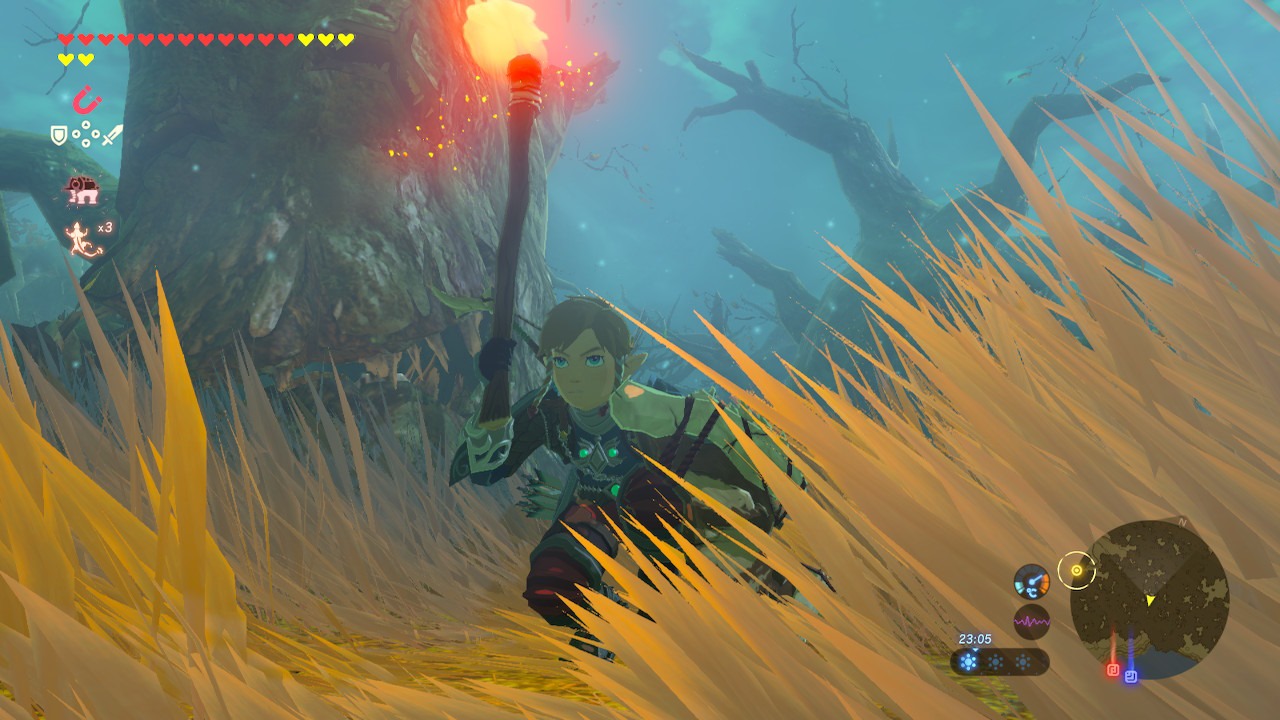
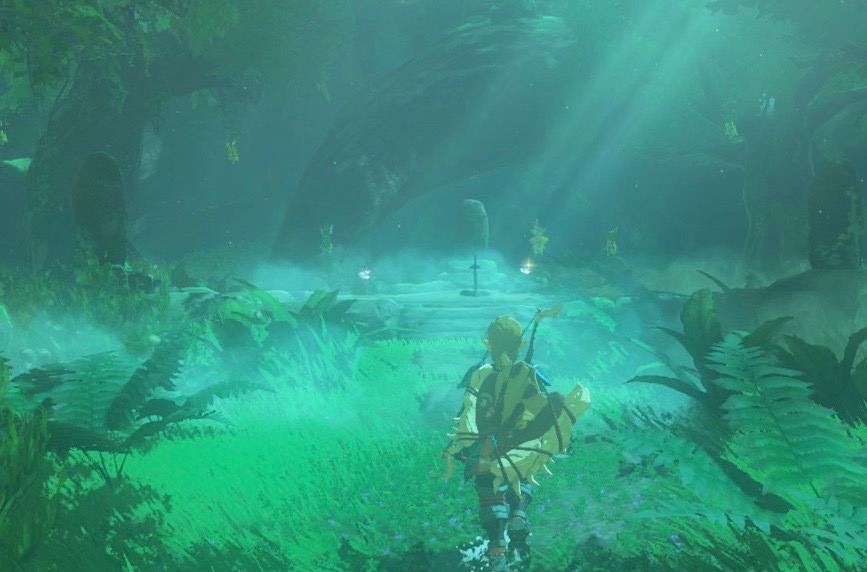
In the Lost Woods game elements such as the confusing structure of the world and its gloomy and terrifying appeal are combined with an oblique game system which makes players suffer. Yet these negative emotions are also a source of players’ enjoyment and the delight of experiencing a dark wilderness in the relative safety of their homes. In addition, they are on hunt for loot and treasure, particularly the Master Sword, and enact a plot that will eventually lead them to the restoration of order and balance in Hyrule. The function of the Korok Forest is therefore not to be underestimated. It evokes respect and admiration for this untouched realm, the desireto protect it from the outside pollution, and the sheer astonishment of its natural wonders.
Other Regions
It is quite hard to reduce Breath of the Wild to the above described regions, and therefore these last bunch of fotos further illustrate the game’s diverse landscapes and events. Whether these revolve around the hunt for large-scale enemies and dragons, the interaction with animals, panoramic vistas, or confining labyrinths, Breath of the Wild captures the game tourist’s interest in the fantastic, the beautiful shot to capture not only parts of this breathtaking world of also of her or his experience in the game world and the ongoing plot.
References
Burke, Edmund. A Philosophical Enquiry into the Origins of the Sublime and Seautiful. Calgery: Anodos Books, 2017.
Farca, Gerald, Alexander Lehner, Victor Navarro-Remesal. “Regenerative Play and the Experience of the Sublime in The Legend of Zelda: Breath of the Wild,” Proceedings of The Philosophy of Computer Games Conference(2018). http://gameconference.itu.dk/papers/06%20-%20farca%20et%20al%20-%20regenerative%20play.pdf
Nintendo. The Legend of Zelda: Breath of Wild. Nintendo Switch, 2017.
